OUR FIRST HOME/STUDIO.
Two years at Pratt came to an end. I made plans with Jim to get married and move to Alfred NY, so I could attend Alfred University in upstate NY to study under Harvey Littleton, the foremost pioneer who began the American Studio Art Glass Movement. That plan was put on hold because Jim was firmly dedicated to working with his father, in the family business, Aldrich Roofing Co. side by side, creating and repairing some of the most beautiful slate and copper roofs on the most historical and contemporary mansions in the Hudson Valley. I agreed and focused my education locally. I didn’t want to lose him to some Poughkeepsie bimbo. He was very eligible.
I continued sketching.
DR. THOMAS PELISH and JIM. A study of 2 brothers. pen on paper. 12 x 14 inches.
BARRY. My Dog. watercolor 12×14 inches.
GENEVIEVE CAULKINS. My mother. pencil on paper. 12 x14 inches. I was under the influence of Albrecht Durer’s etchings. She was much better looking than this drawing.
TITUSVILLE RD. 1966
Jim and I secretly eloped on a cold groundhog day at The New Hackensack Dutch Reformed Church. I didn’t want my parents to know because it might influence my tuition payment for my last semester. Even though it was my own savings, married girls didn’t need a college education. He slipped and 4 times on the church’s icy driveway.
We wanted to note the occasion with this photo. The chair, a Jacobean Revival oak bench was one of my first antique rescues. I was 16, and a neighboring deserted farm house had this in the second floor hayloft. First I pushed a nearby cushiony mattress out of the window, and then the bench. It sustained slight damage. I’m sitting beside it right now. Damage repaired.
We purchased our first home. Jim and I pooled our savings and bought our first home. $12,000.00.It was a prefab experiment from the 1939 World’s Fair.
A Vassar College geology professor, F. Scott Warthen, bought the kit and erected it on Titusville Rd, La Grange, NY. We bought it from him in 1967, with 3 acres of land. Secret – to this day there are rare geological samples from his collection buried around the foundation of the house. We dug up some when we were excavating for a pool. Many years later a gentleman told me he had attended my garage sale before we moved, and had purchased the rock samples. He said they were extremely rare and are the highlight of his collection.
MILTON GLASER
During this time Jim and I met many important artists. Jim put a new slate roof on Milton Glaser’s Woodstock home. He invited us to visit Push Pin Studios, Manhattan where he encouraged me to continue allowing my artistic talent to grow. He drew Jim’s portrait. Jim gave Milton his painting, TUNNEL OF LOVE. Hopefully I will find an image.
PORTRAIT OF JIM, 1975. pen on paper, by Milton Glaser. 24 x 16 inches.
Glaser was designing THE FALLING MAN series at the time.
THE MILTON GLASER POSTER BOOK. 1977.
RECORD ALBUM COVERS.
I loved the art on the record album covers. I applied to all the big studios hopeful that I could be a record album cover artist.
WARNER BROTHERS said ‘Nothing at the moment”
Motown offered to “file” me.
A&M Records bluntly said “We don’t use this type of work.”
PAPER MOON. declared that my art was of “No Use”.
I moved on.
WATTS TOWERS. SAN FRANCISCO
We visited California. My favorite place was Watts towers. It was right after the race riots. A black man approached us outside the towers and sold us a $10.00 identification card which read. “You Are Now An Official Negro. In case of riots, present this card and you will be safe. “
Simon Rodia created 17 interconnected sculptural towers, architectural structures, and individual sculptural features and mosaics.
Before we left NY, Jim put a bun in the oven. Suddenly the bun sprung to life under the magical arches of the Watts Towers. The Official Negro card combined with the surreal world of the towers gave me a real feeling of safety.
SUNY at NEW PALTZ
I was still a student working on my BA. I enrolled in the Fine Arts Department at the local state college in New Paltz. Louis Krevolin, my ceramic professor allowed me to apprentice at his ceramic studio in Highland, NY.
My professors, Robert Scheuler and Steven Kolpan awarded me with their scholarship, Art Dreams, to continue my education at New Paltz. Professor Scheuler and the students played with the wind and sheets of plastic which translated into the creation of many inflatable buildings.
Inflatable building at the BOCA RATON ELEMENTARY SCHOOL,1982
Amber’s inflatable building, Penland School of Craft,1998.
GLASS
When I was born my maternal grandfather gave me an END OF THE DAY paperweight. It was made by a West Virginia glass factory worker who had an inspired moment after a hard day’s work. The glass’s clarity was poor because it was intended for jars and bottles. The colored chips were an abstract collection. The craftsmanship is apparent with the perfectly placed bubble. 20 years later the cracks suddenly appeared when I took it off a cold windowsill and washed it under warm water.
When I was ten I bought a BACCARAT MILLEFIORI paperweight at a yard sale for a dime. It was this paperweight that triggered many unanswered questions about hot glass fabrication.
When I was 20 we took a family trip to Proctor, West Virginia to visit my mother’s relatives.
 My maternal grandfather is 5th from the left. Marion Chance. His mother Lucy Lemons is a direct descendant of Isaac Smith, the oldest man in West Virginia, He died in 1898 at 109 years old. She is sitting in front of her 10 children.
My maternal grandfather is 5th from the left. Marion Chance. His mother Lucy Lemons is a direct descendant of Isaac Smith, the oldest man in West Virginia, He died in 1898 at 109 years old. She is sitting in front of her 10 children.
It was here in Proctor WV that I discovered factory hot glass. The gaffer was swinging molten glass on the end of his blow pipe to stretch it to form a tall vase. These factory workers made fancy canes that they displayed when they marched in the Labor DayParade. I was able to find one in a junk store.
CANE. Blown Glass. h=36 inches.
When I went home I sold my BACCARAT paperweight and with the money I bought a crucible and low melting glass marbles #475 that were advertised in Ceramics Monthly. The inventor of these products was Dominick Labino. He was Vice-President and Director of Research and Development until his retirement in 1965 at Johns-Manville Fiber Glass.
#475 Marbles, Created by Dominick Labino, 1962-1987
Armed with my West Virginia blowpipe, a gift from my mother, and Jim’s hot tar kettle’s firepot positioned under my 55 gallon drum lined with ceramic fire bricks, I began blowing glass in our garage and became a pioneer in the American Studio Art Glass Movement. My connection with glass appears throughout my life.
JASON
The birth of our son in 1968 became our new focal point.
Jim celebrated Jason’s christening with a pig roast.
Here’s his PHS friends. Left to right. Anthony Marchese, Freddy Walker, Davey Moore, Scott Daniels, Jim, John Sardi.
My paintings became cutouts of family scenes.
 THANKSGIVING ’73. Canvas stretched on sculpted plywood. 6×7 ft. Exhibited in the show SEVENTEEN WOMEN at 19 Gallery. Poughkeepsie.
THANKSGIVING ’73. Canvas stretched on sculpted plywood. 6×7 ft. Exhibited in the show SEVENTEEN WOMEN at 19 Gallery. Poughkeepsie.
HOMEMADE BREAD. oil on canvas stretched on plywood. 6 X 4 ft.
Jim has always been my favorite subject.
FIGHTING OFF A CHILL AFTER ROOFING IN THE HOT SUN ALL DAY. acrylic on paper. 18 x 24 inches. His mother made the afghan blanket.
My mother and father encouraged my pursuit of my education by taking care of Jason while I was studying at SUNY, New Paltz, in the Fine Arts program. I had the grand pleasure to be schooled by Professor Bob Scheuler, the creator of the Tethy Project, a world wide sculpture installation. When Professor Scheuler relocated some of the fabrication to a Boca Raton warehouse, Jason and I became his marble block fabricators. Here I learned stencil cutting and sandblasting which would become extremely important.
URETHANE FOAM FOR COMMERCIAL AND ARTISTIC APPLICATIONS
Jim was experimenting with a new building material called urethane foam. Besides his commercial and architectural projects, he created many sculptures. He did a demonstration for Yale and used Ira Richer as a form. He was a student who became a professor at THE SCHOOL OF VISUAL ARTS. Ira discovered that he was stuck as the foam expanded around him and heated up.
Jim was able to set him free before he passed out.
Jim brought the sculpture home to finish the work of art.
He placed his sculpture at our front door.
The foam arch gave the Jag an extra layer of protection.
Jim created a foam dome for us to live in. First he inflated a 30 ft. paper dome.
He used an air rake for inflation.
Interior view.
He’s securing the paper bag.
Hey Jim, if you love me, put your hand on your hat.
Then he covered the paper bag with urethane foam.
Side view.
A variety of windows added to the unique facade.
Ira enjoyed visiting us in our dome.
Our main residence received a coat of foam.
No surface was left unfoamed.
Dutchess Suburban Newspaper did a beautiful article. June 1971.
Jim painted the interior with his unique style.
The colors were white with maroon trim.
Adjoining room with Jim and Howdy Doody..
Jason enjoying the open play space.
We lived in it and enjoyed the best acoustics. John Lennon’s IMAGINE and Sixto Rodriguez, COMING IN FROM REALITY sounded extra good in the dome.
ROXBURY, CONNECTICUT.
Mindy Michael Wager hired Jim to restore his barn. It was where we met Alexander Calder, and Arthur Miller. They were there to see what this new building material was all about. Jim amazed everyone with the results.
The beams were hand scraped. The foam was applied perfectly.
We drove our 1940 LaSalle convertible to the grand housewarming party.
Professor Bob Scheuler, New Paltz State University, built his foam home on the side of the Minnewaska Mountain.
MO’S HOUSE
The New Hudson River School of Painting.
Don Mahoney and his 4 children lived in this Victorian mansion perched on the bank of the Hudson River. Jim and I painted here with fellow artists, Jerry Starpoli, and Doc Lordi.
DON MAHONEY RESIDENCE. acrylic on paper. 14 x 19 inches. The Tulip tree was destroyed by lightning.
JIM AND SUE AT MO’S. Acrylic on canvas. 16 x 14 inches. 1972
A FRIEND. ink on paper. 12 x 16 inches. 1973
JIM PLAYING CHESS. ink on paper. 12×14 inches 1974.
CHECKMATE. Ink on paper. 12 x 14 inches
CALIFORNIA INFLUENCES.
Bill Rinaldi, Jim’s friend moved in with us when he returned from Vietnam. First he stopped in San Francisco where his Austin Healey and all his new photography equipment was stolen. He healed his sorrow with a very special art form. He bought a suitcase full of Zap comics by R. Crumb. He boarded a plane and Jim picked him up at LaGuardia. Traffic was heavy on the NY State Thruway because it was the weekend of Woodstock. The NY State Troopers were stopping and searching the music lovers for drugs. Lucky for Jim that his Jaguar was overlooked because Bill also had a suitcase full of marijuana.
Bill established a playful atmosphere in our home.
When Bill opened a restaurant in Newburg called Munchies, I decorated it with zappy R. Crumb figures.
SKETCH FOR FLAKEY FOONT. pen on paper. 1970.
Sketch for Bad Guy Billy Beer Can.
NANCY GRAZIANO, a friend and a bonified psychic, returned from her spiritual quest to California. She introduced us to BE HERE NOW, a guide to living. She designed a set of NEW AGE tarot cards which I illustrated in edge lit glass when I established my studio in Florida.
THE HIEROPHANT 1/4 inch plate glass. 14 x 18 inches
THE SUN. 1/4 inch plate glass. 14 x 18 inches
TRANSFORMATION. 1/4 inch plate glass. 14 x 18 inches.
Our time here came to an end.
NEXT- WEST PARK.
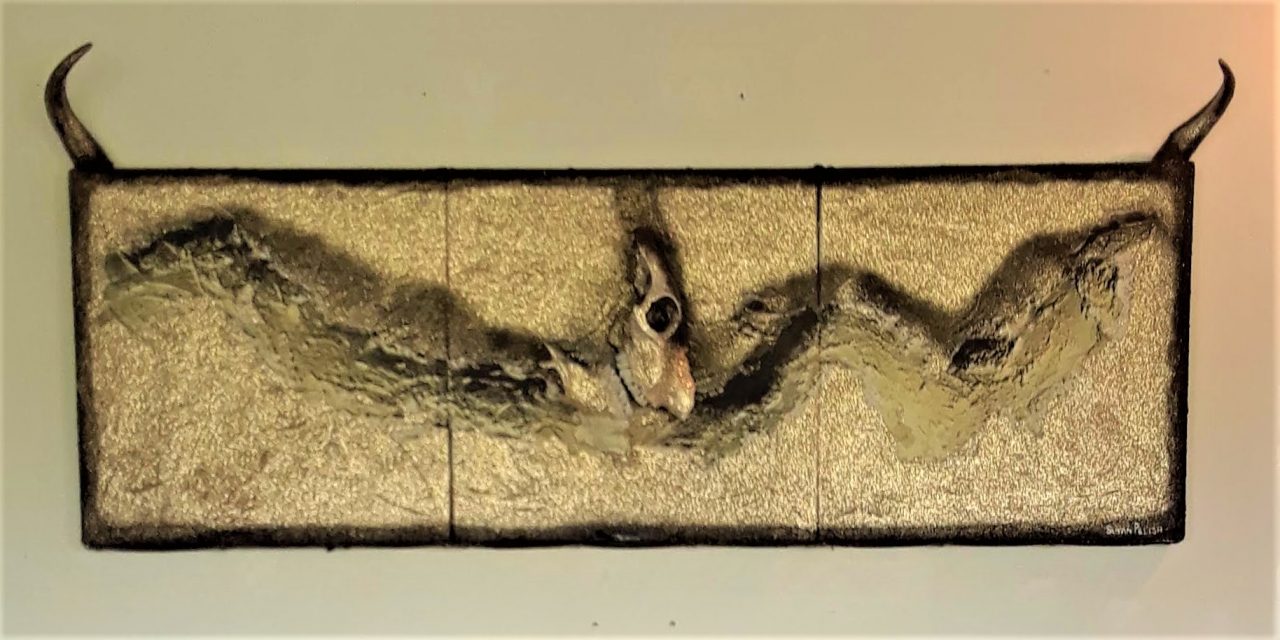
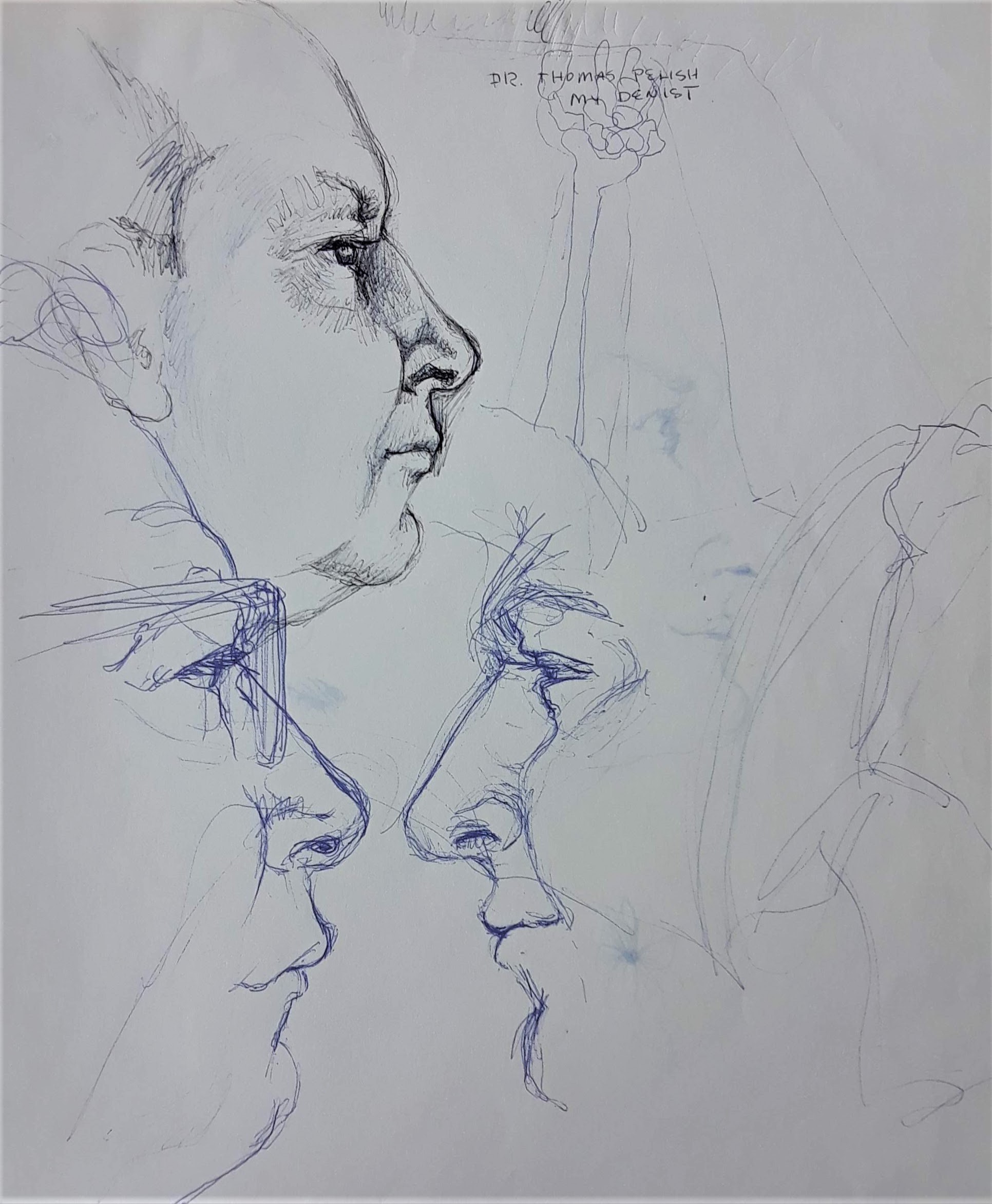
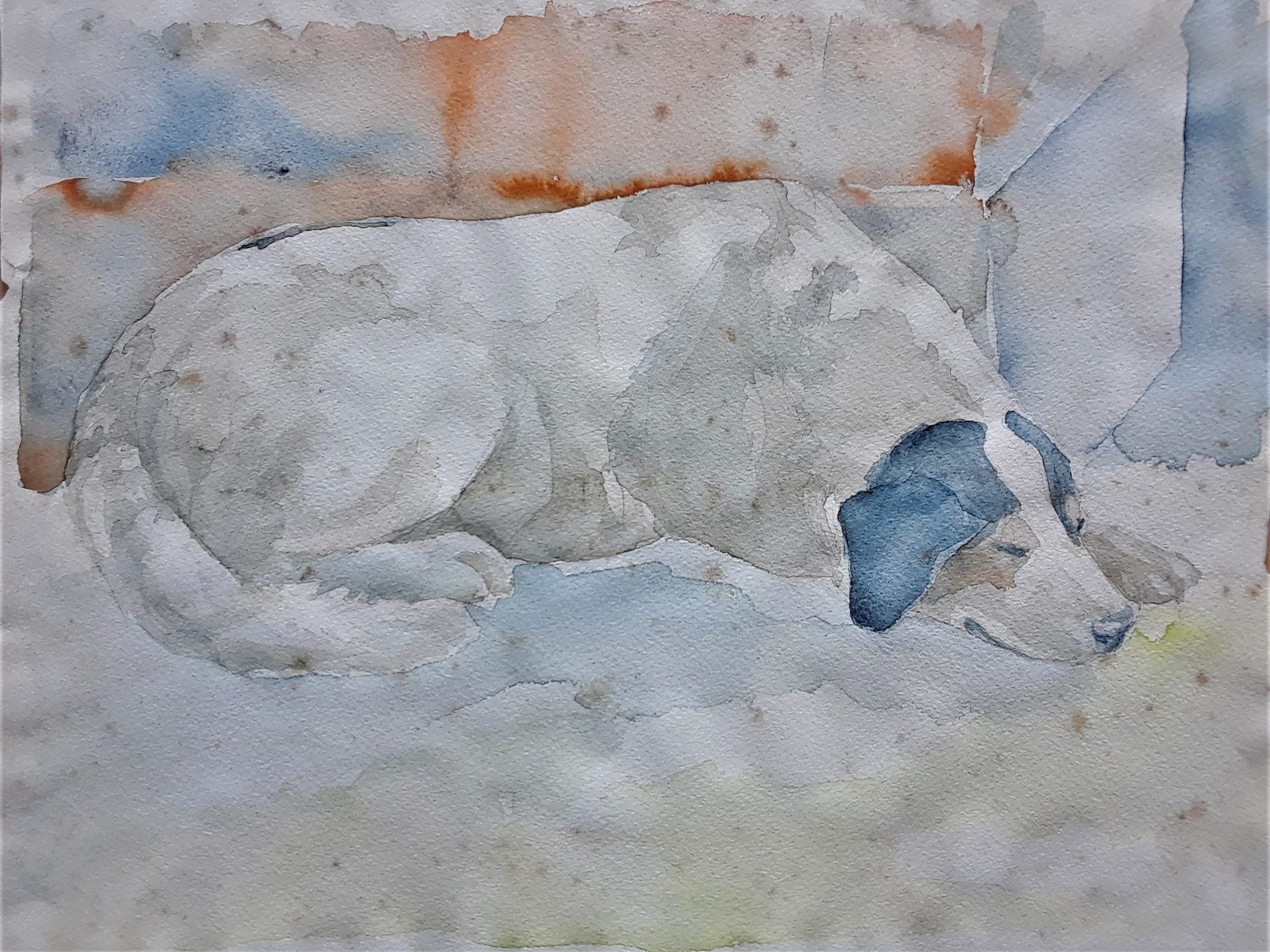
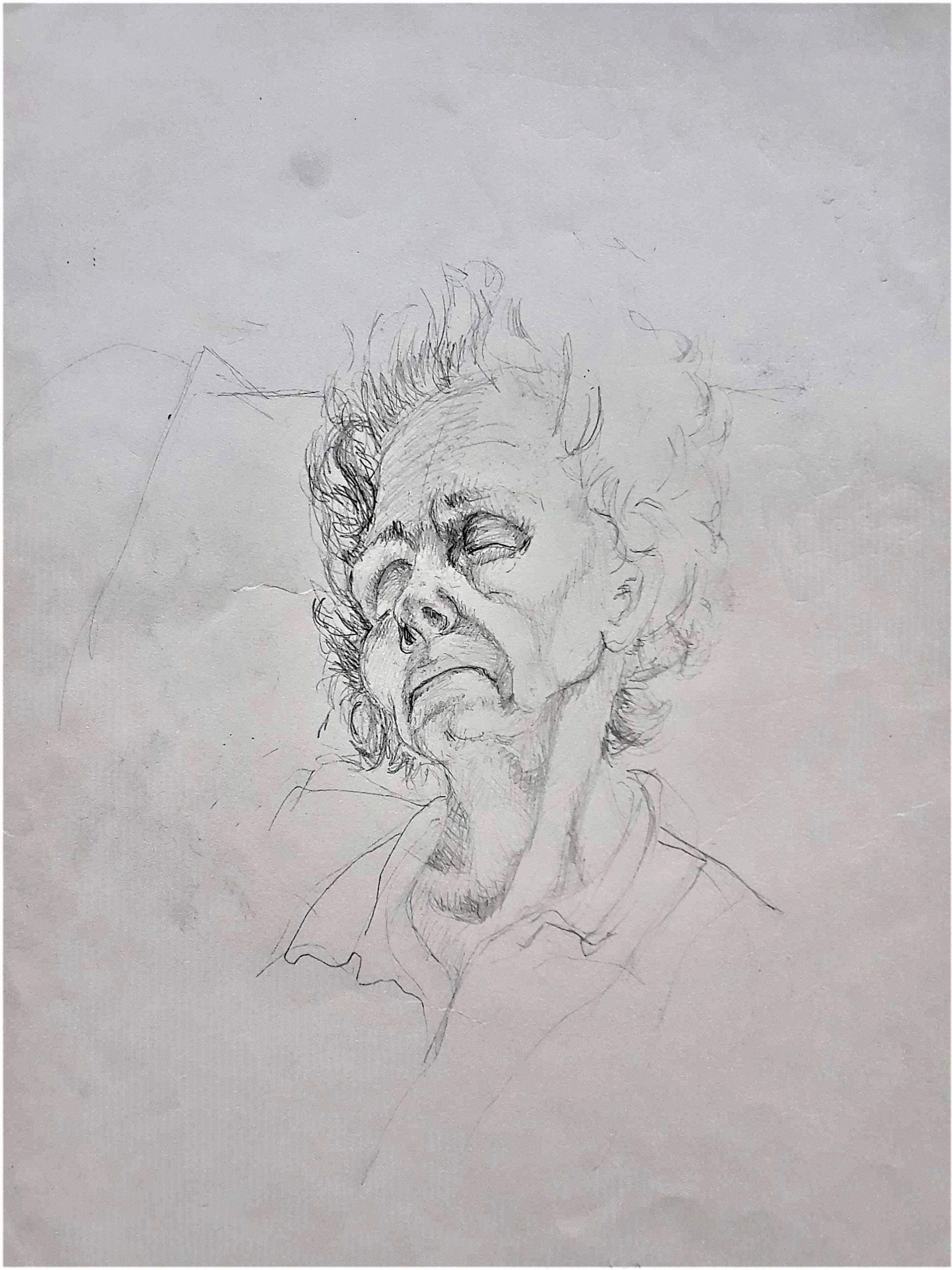
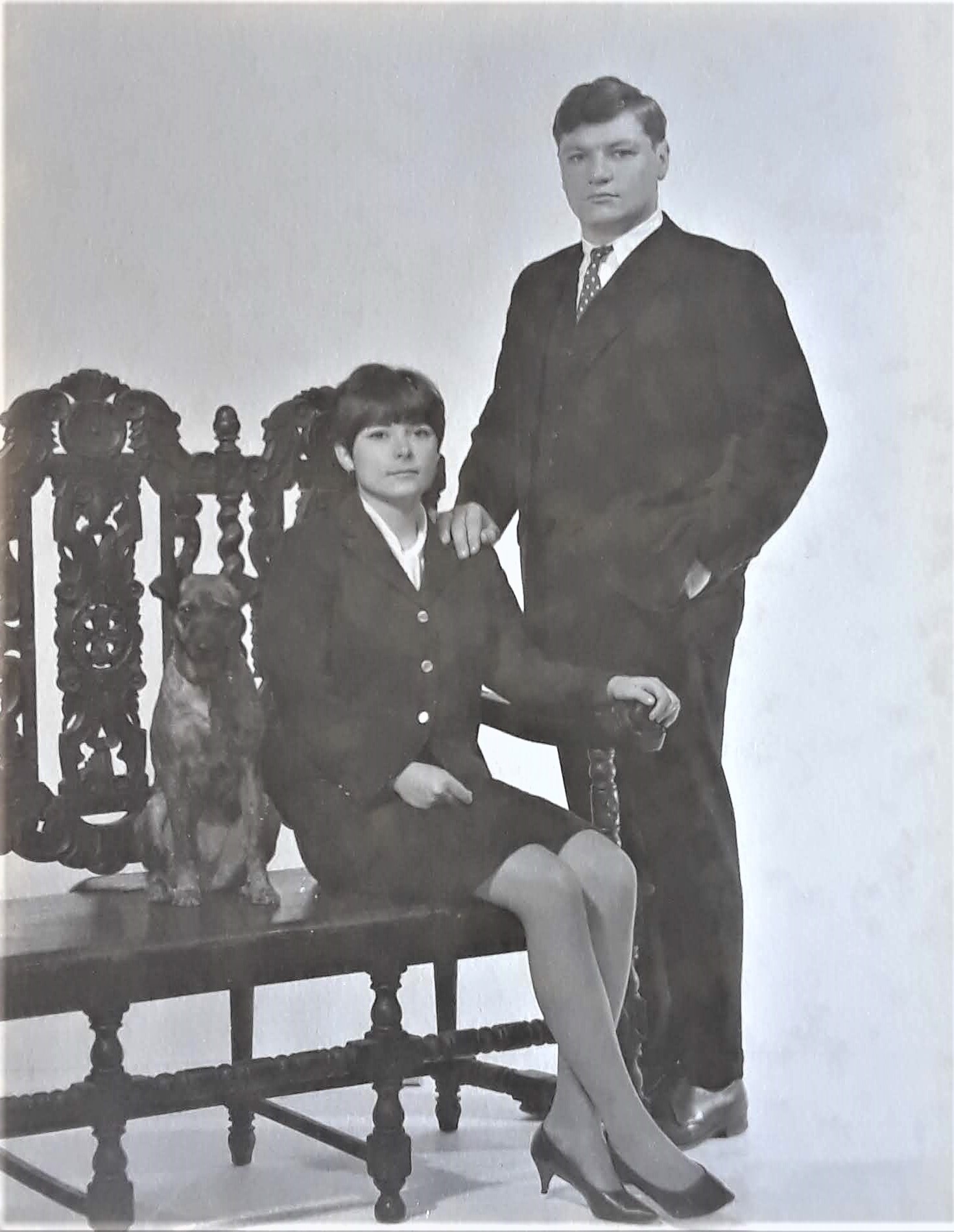
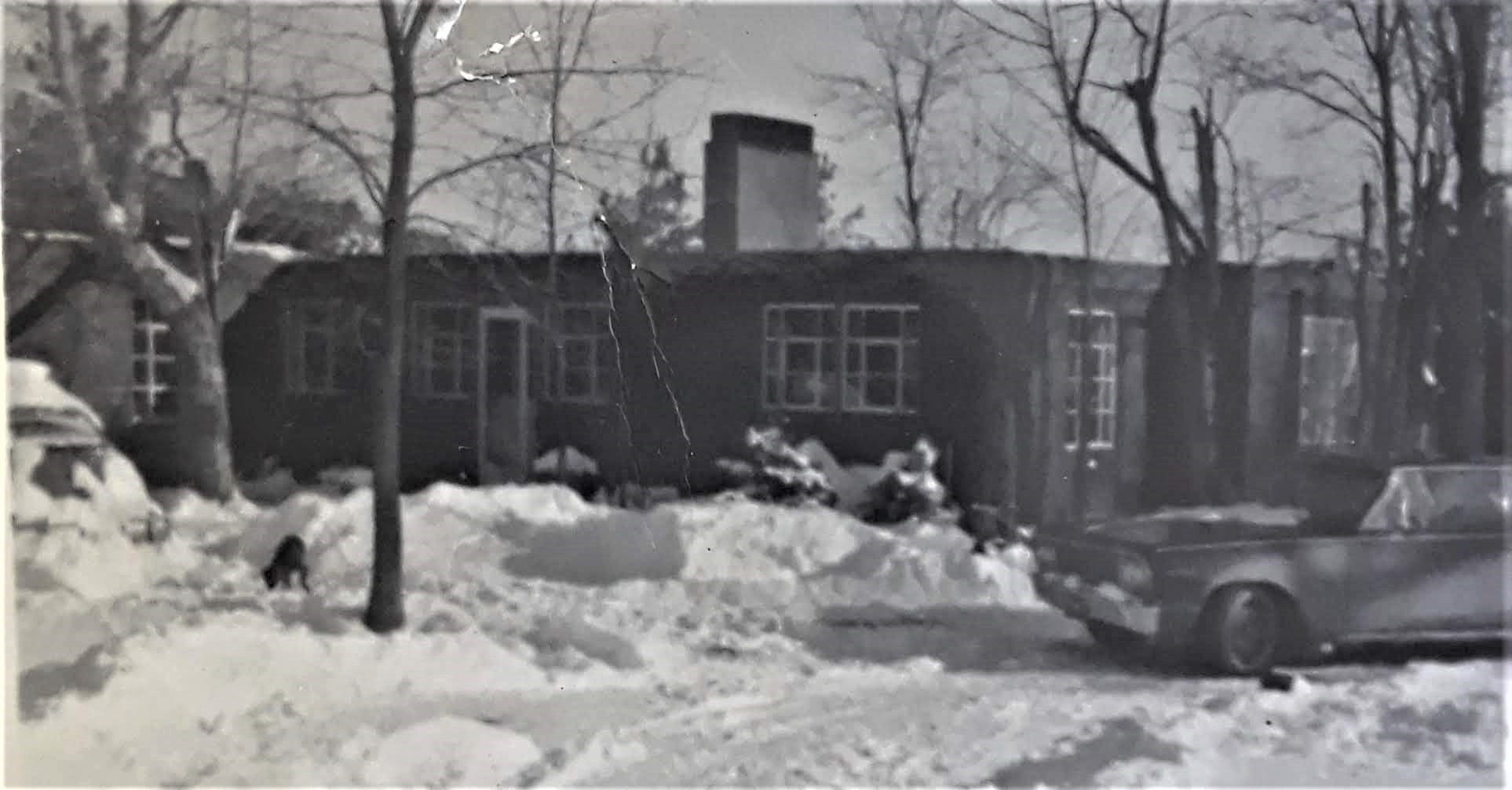
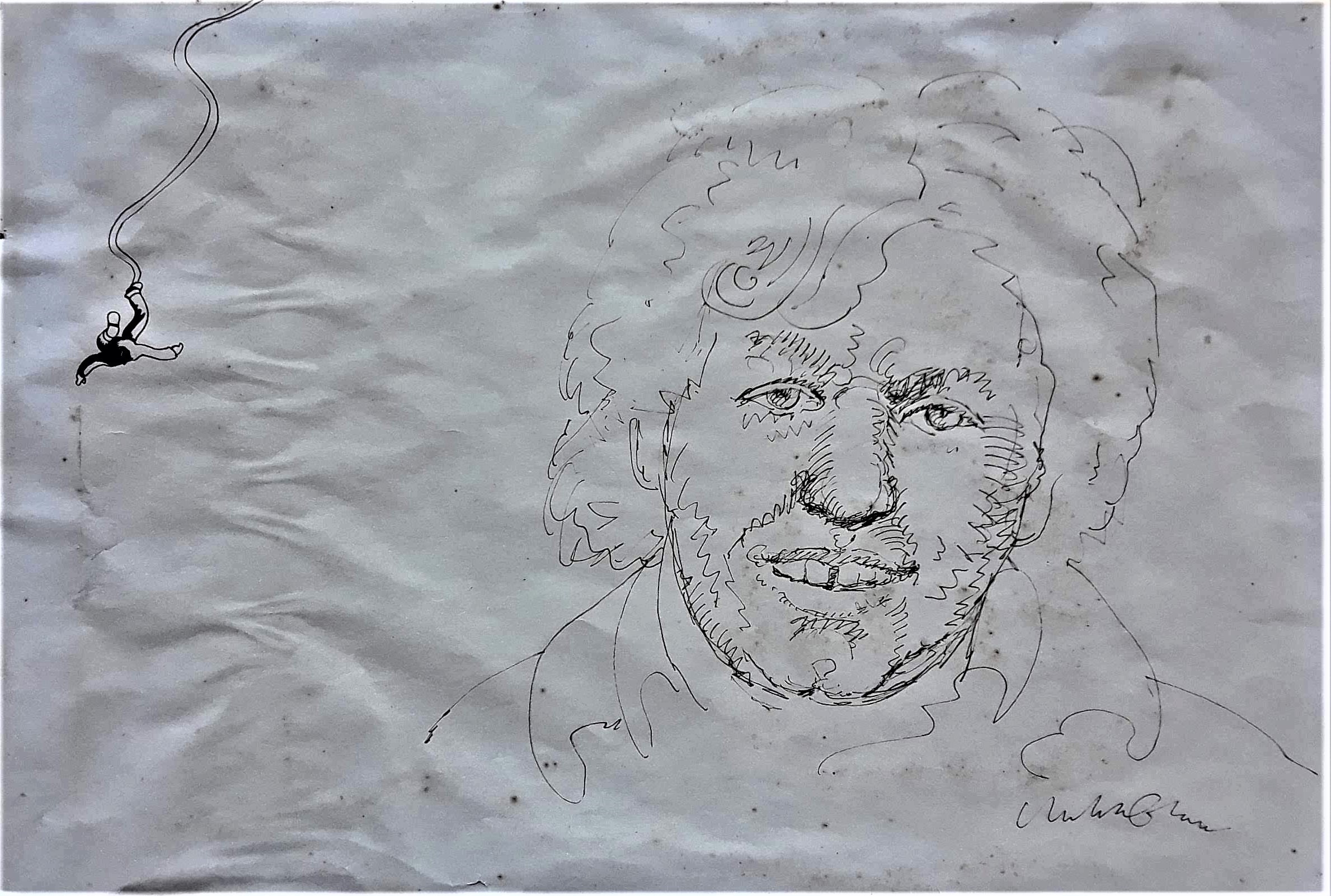
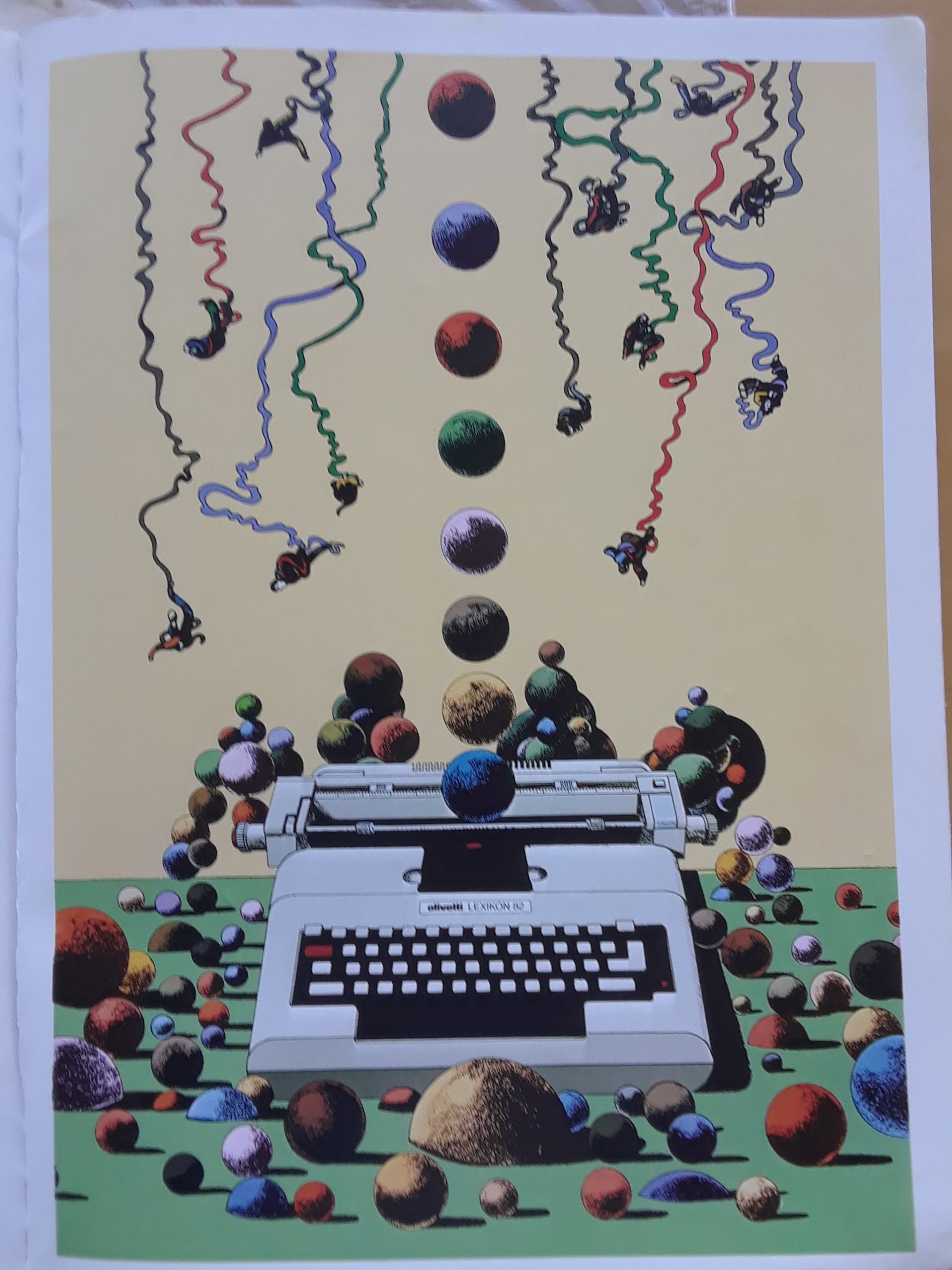
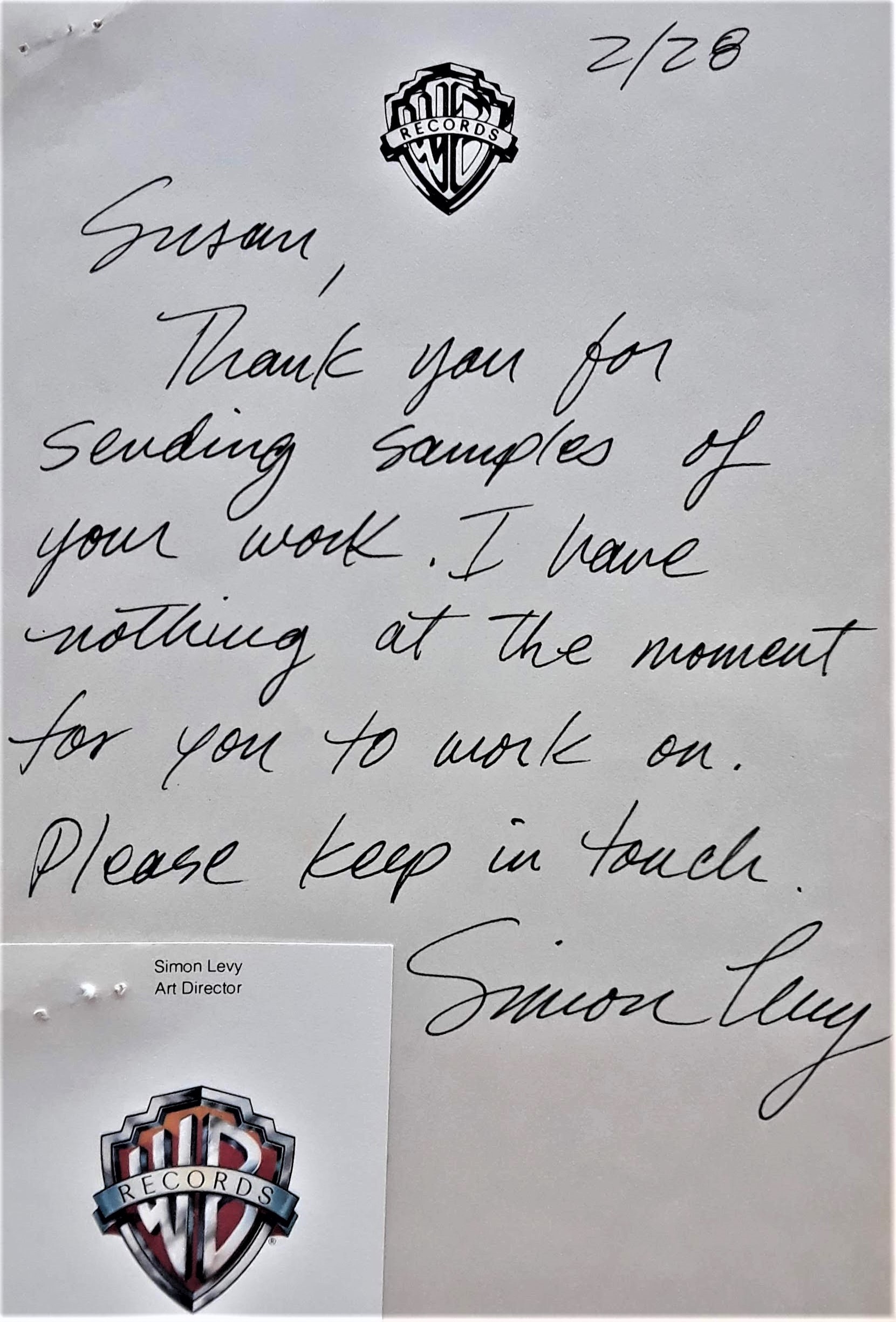
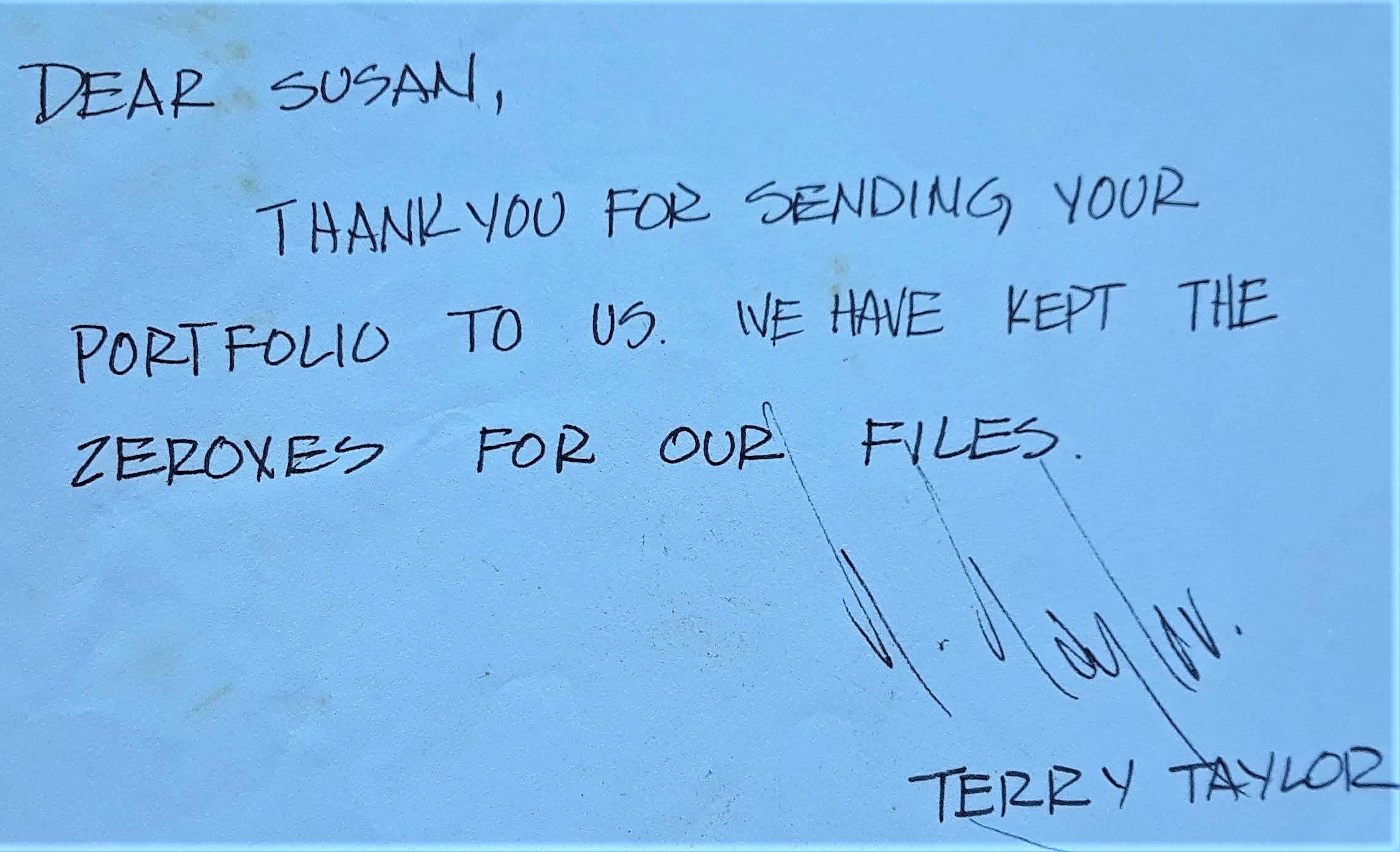
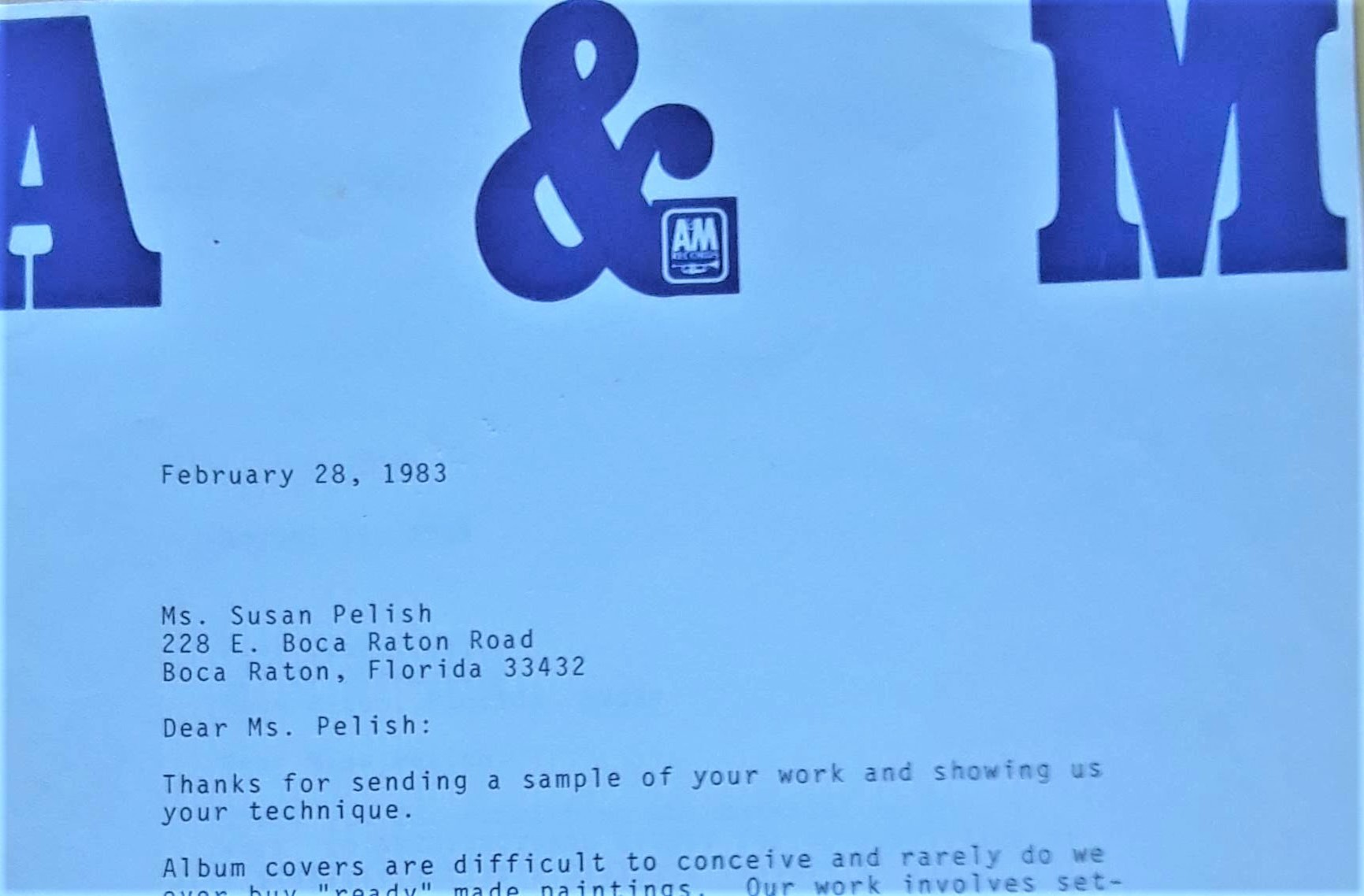
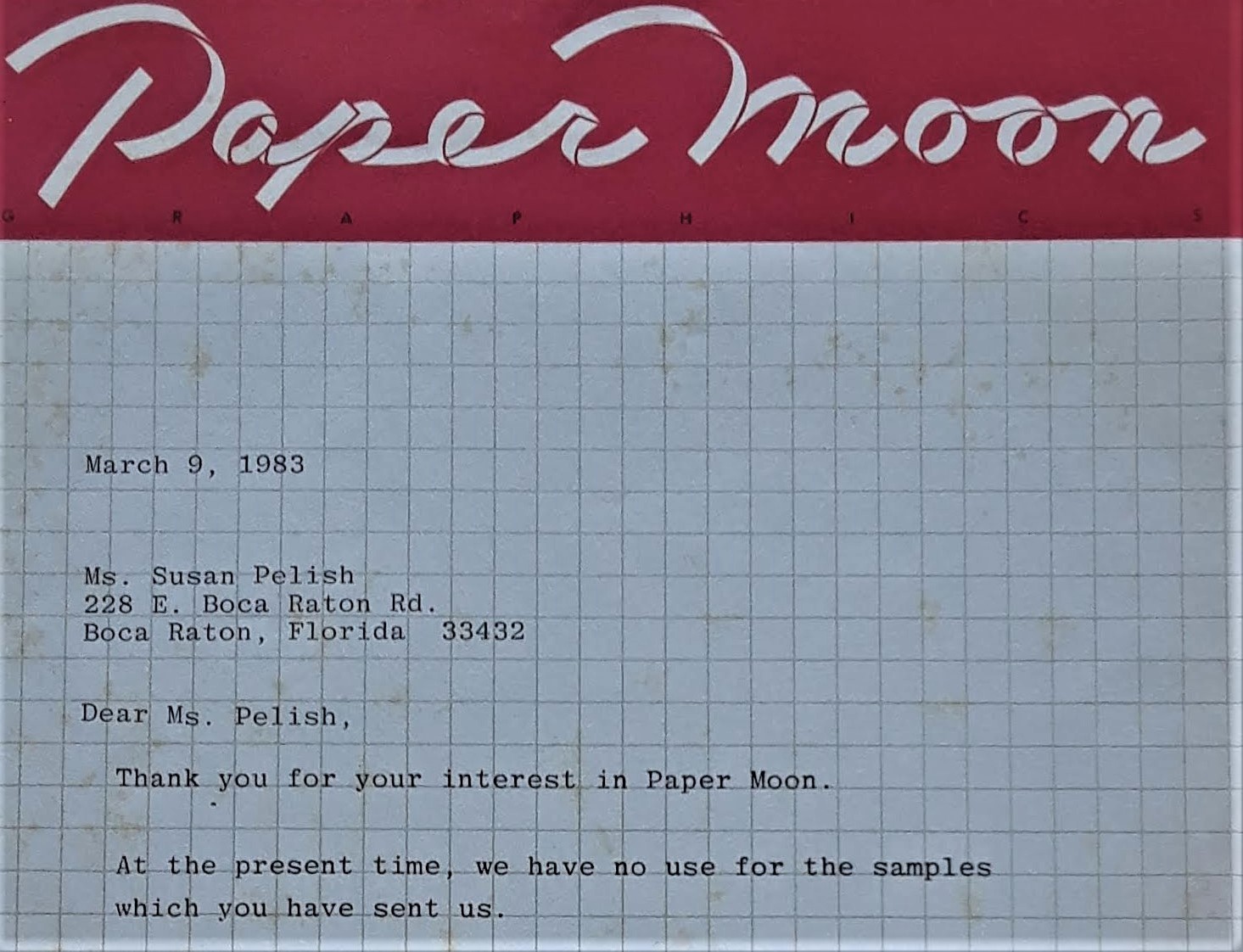
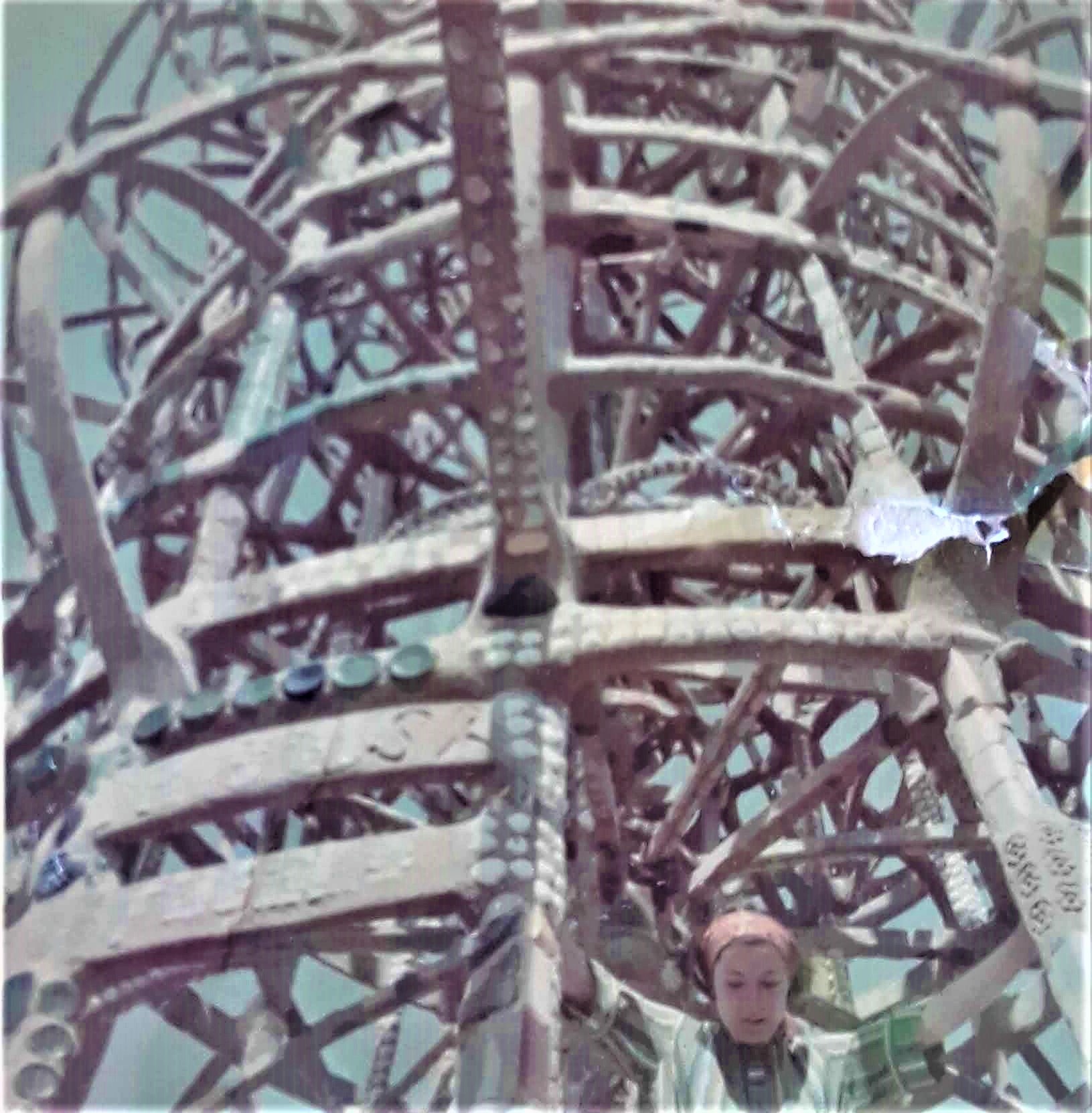
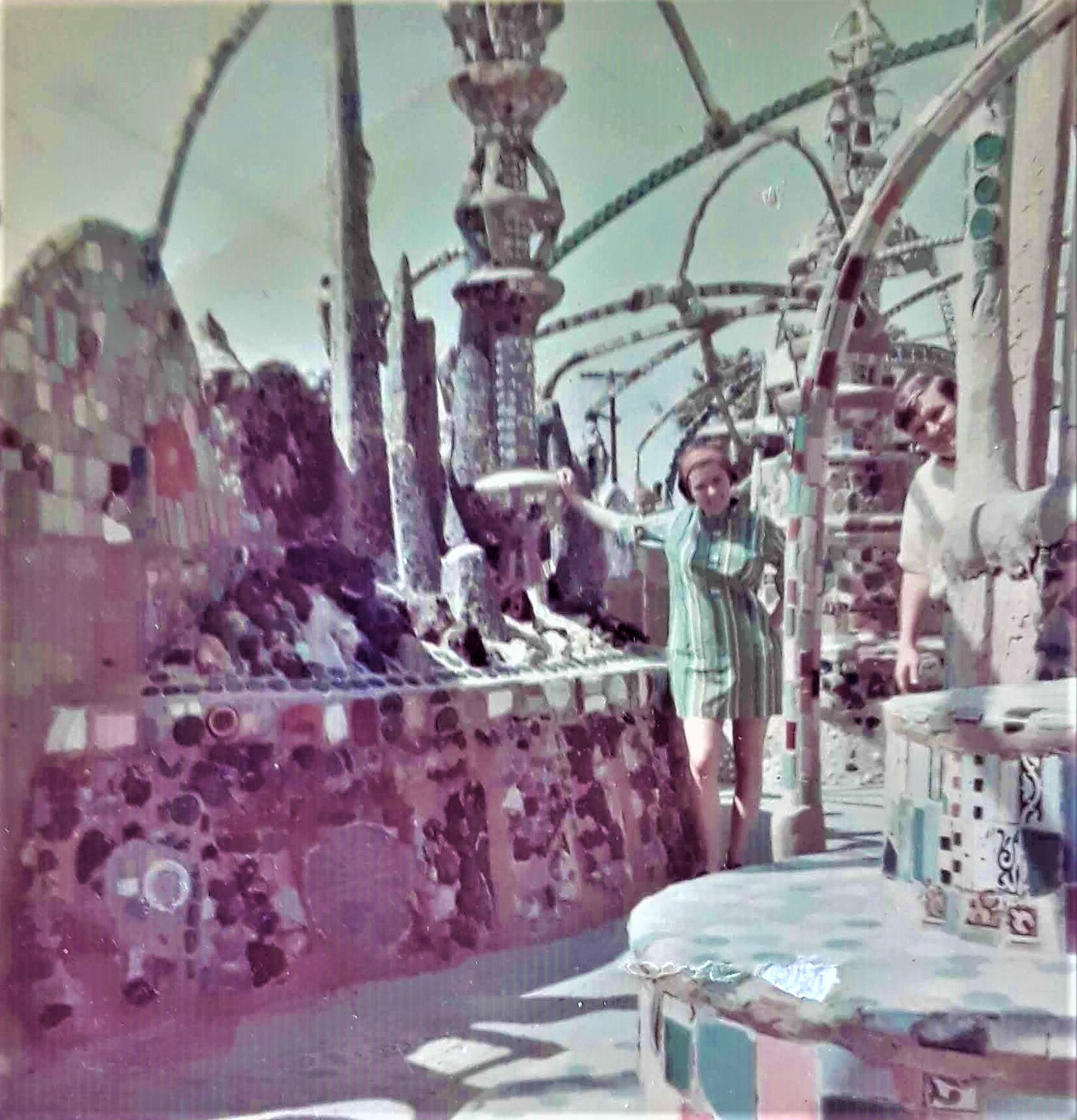
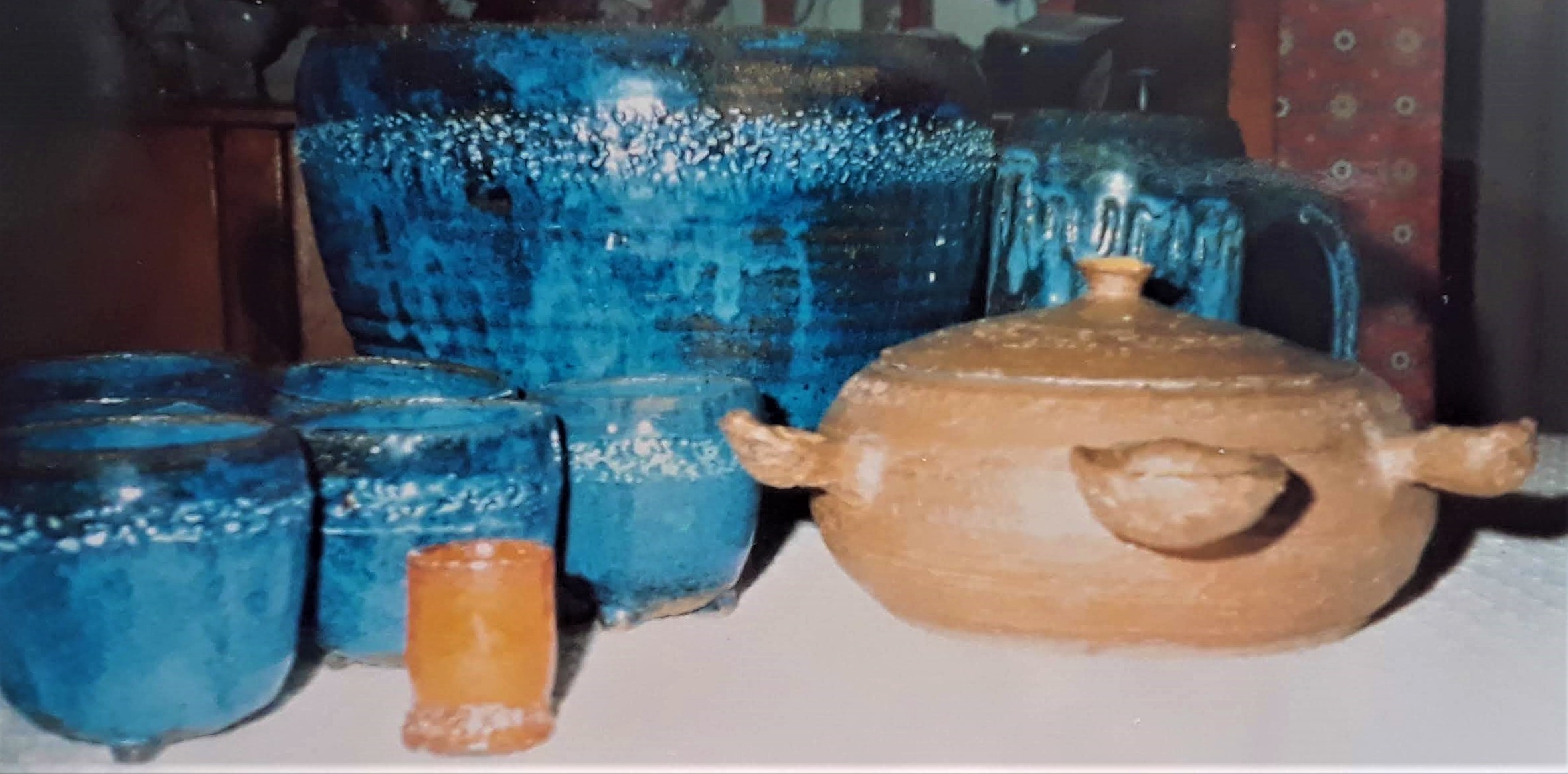
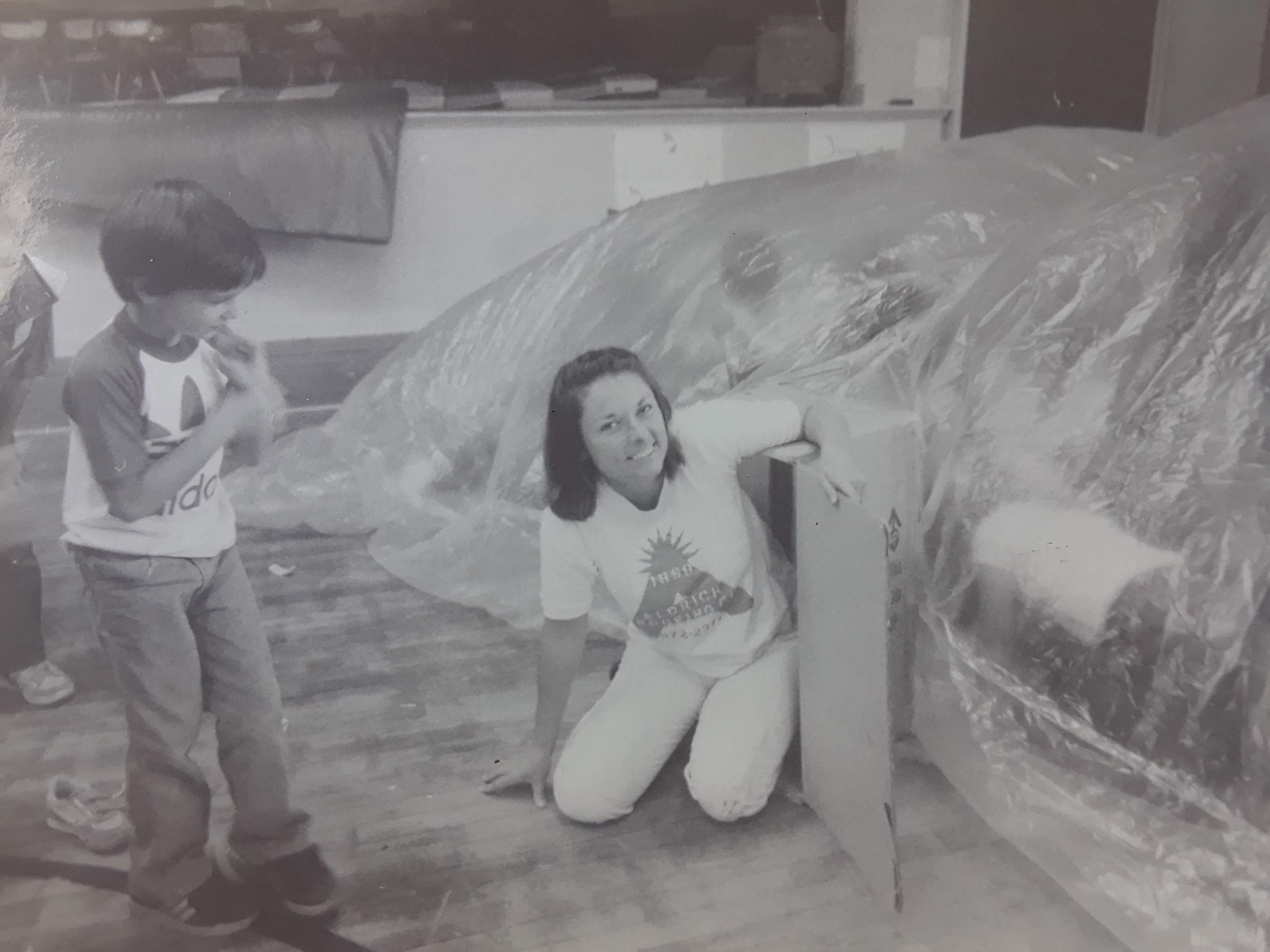
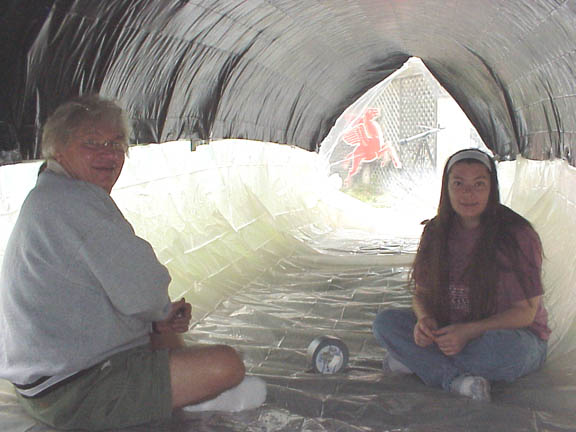
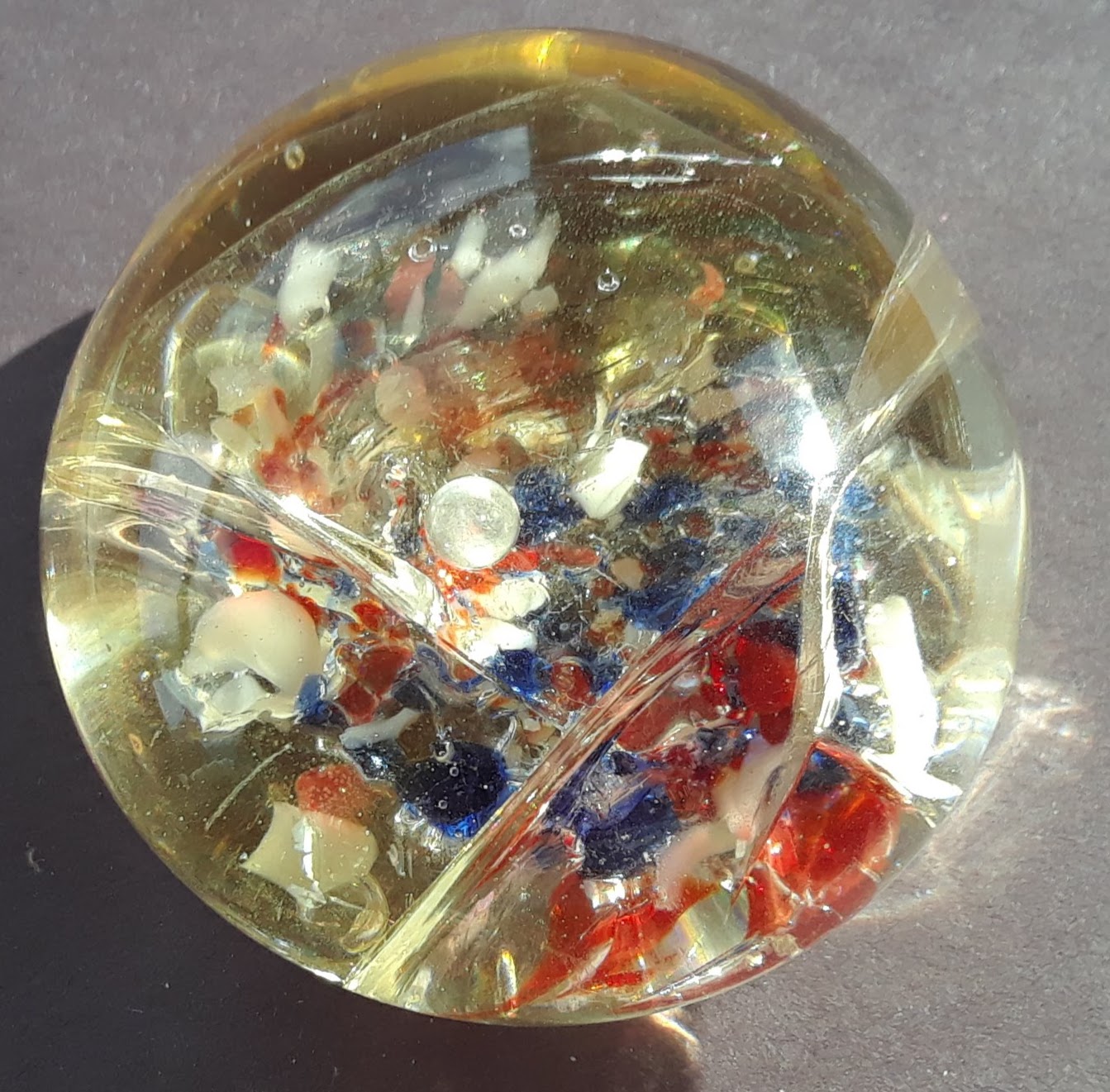
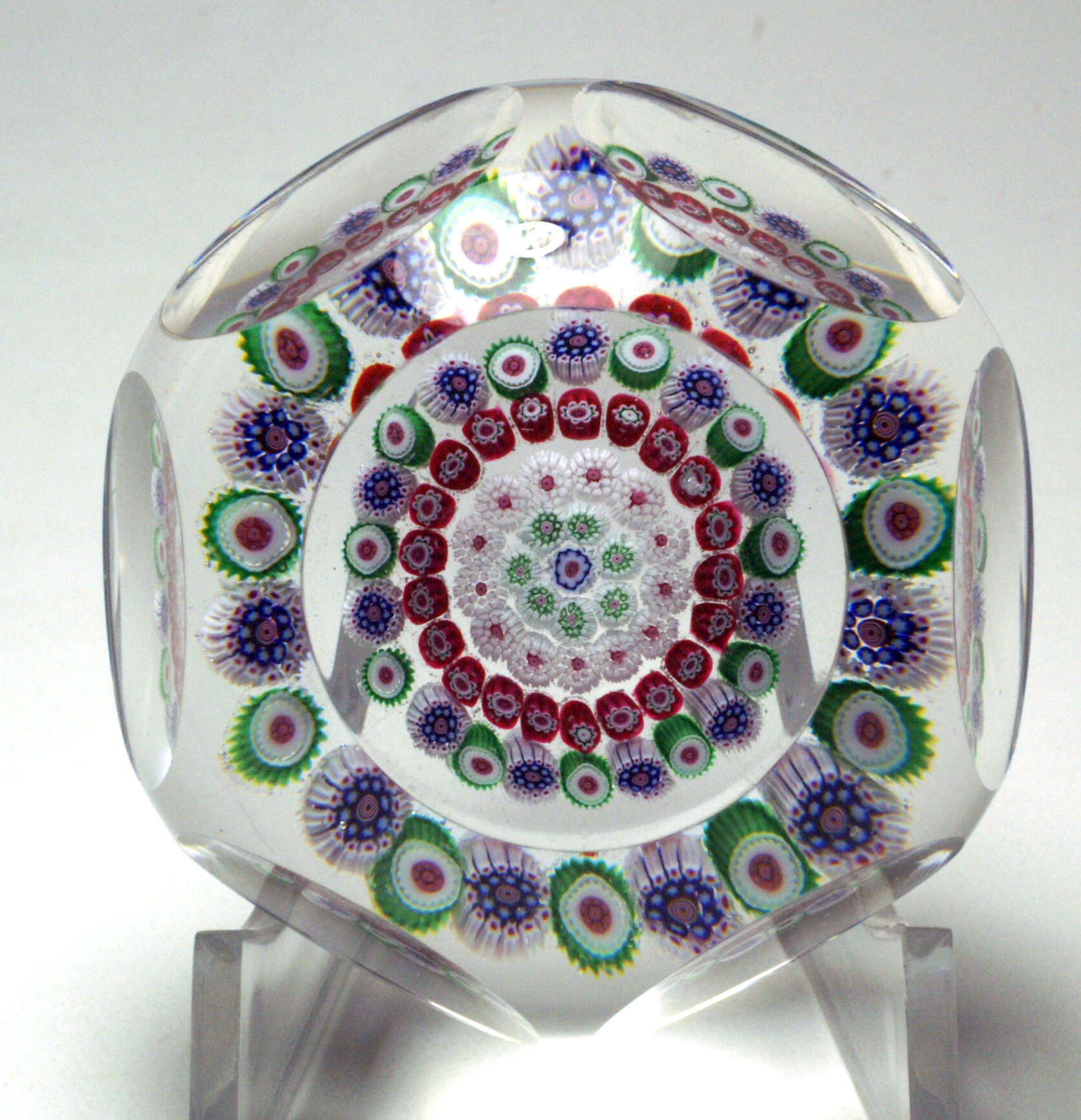
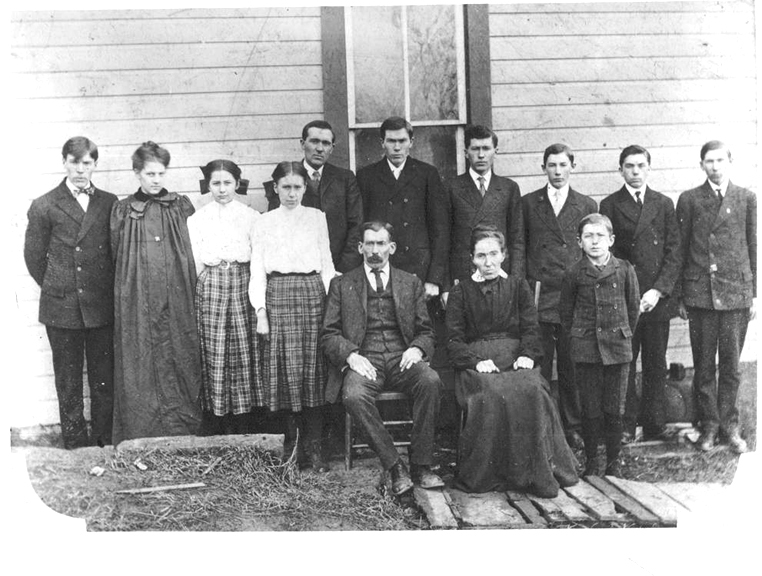
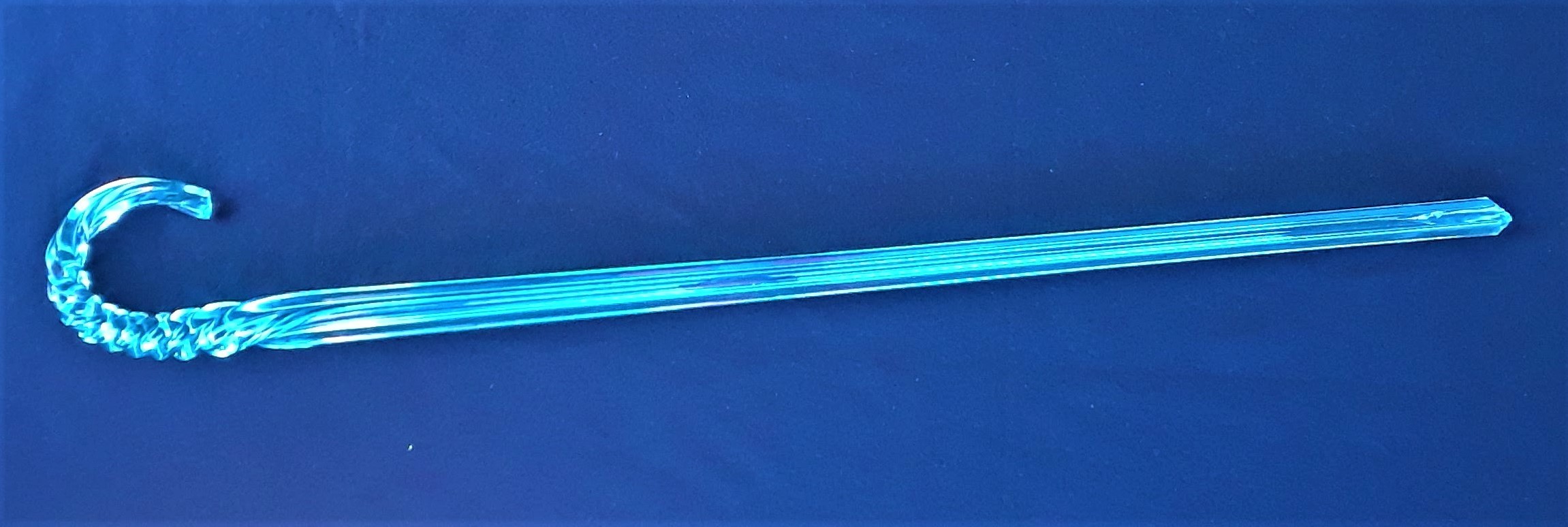

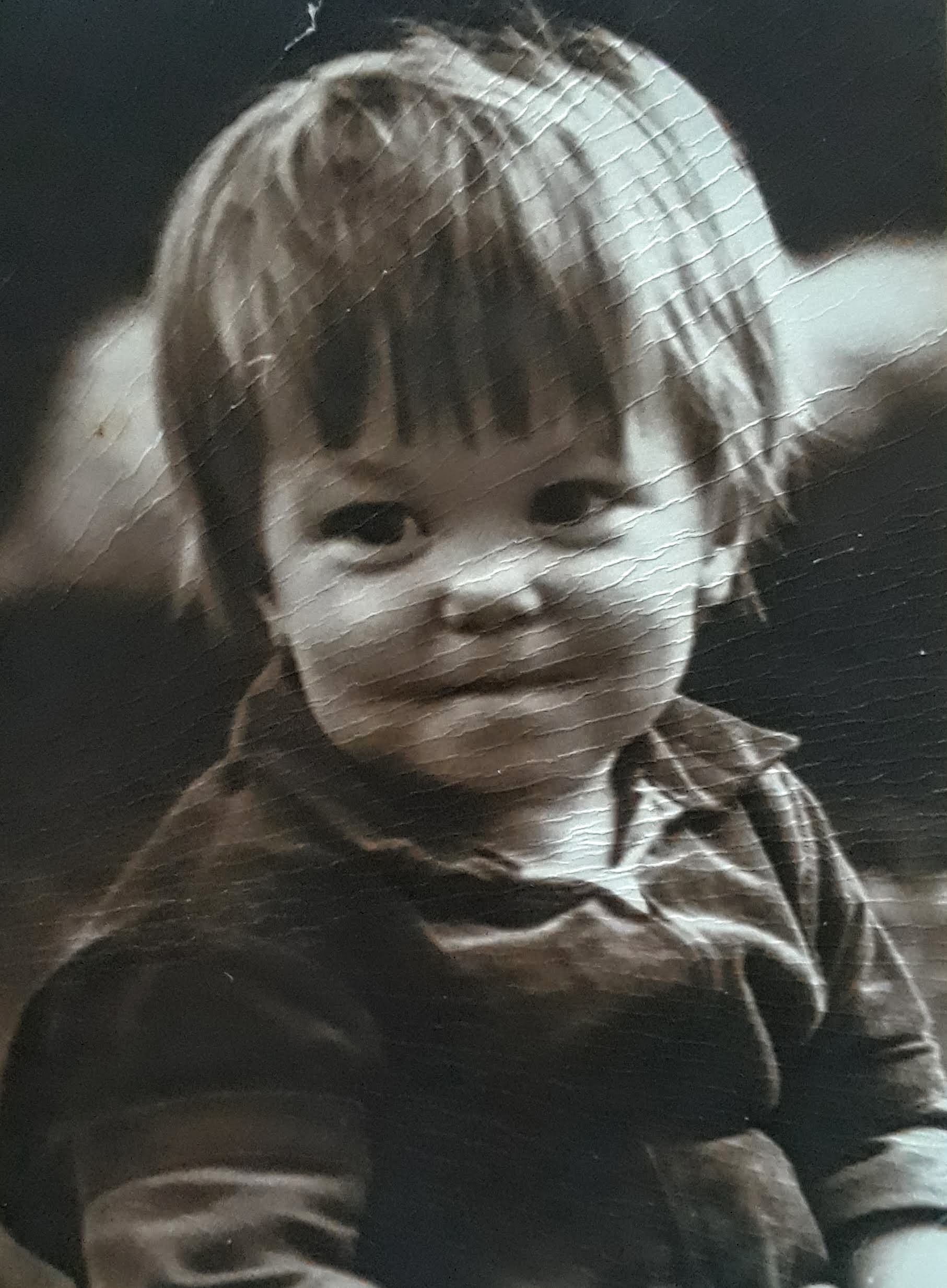
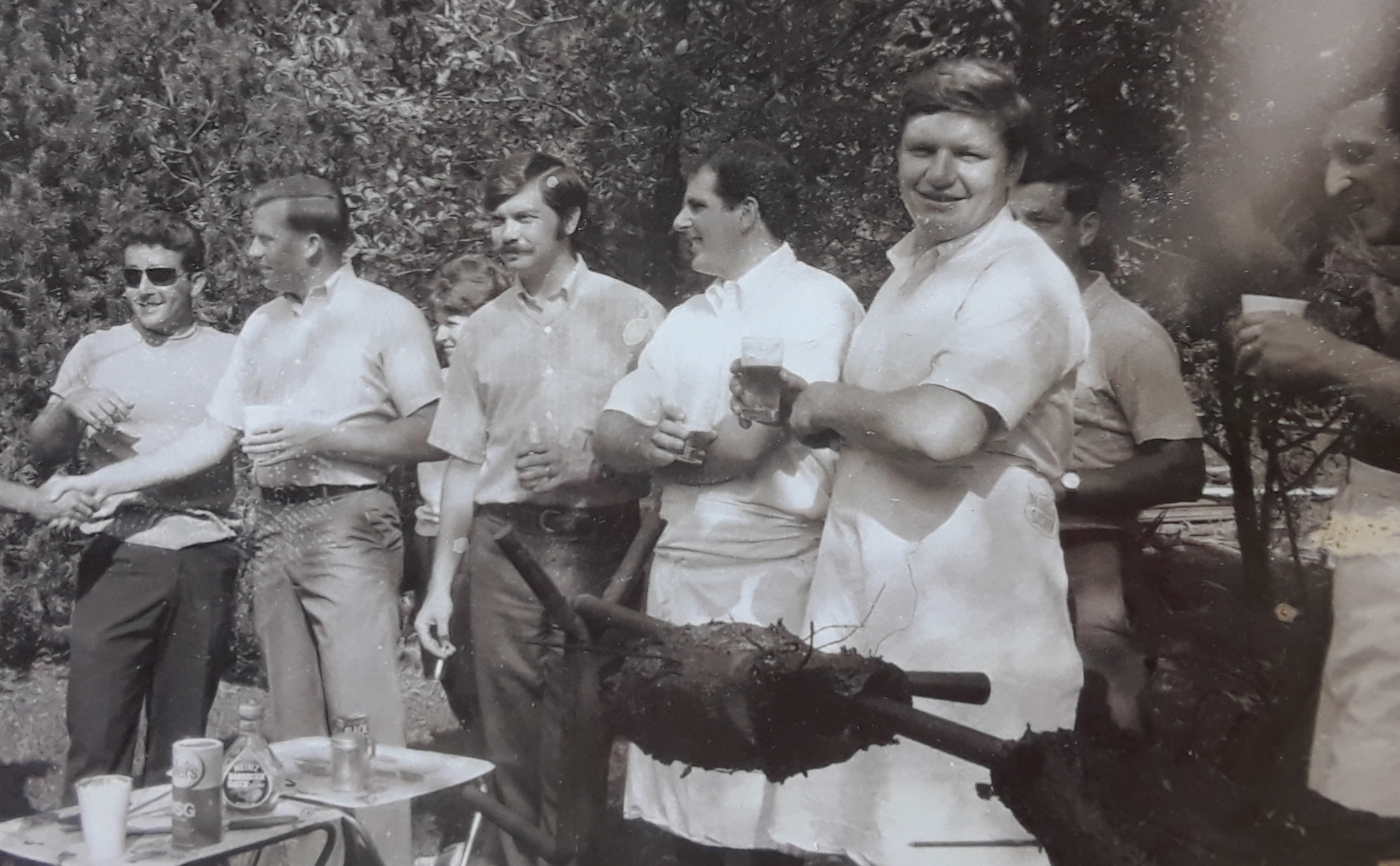
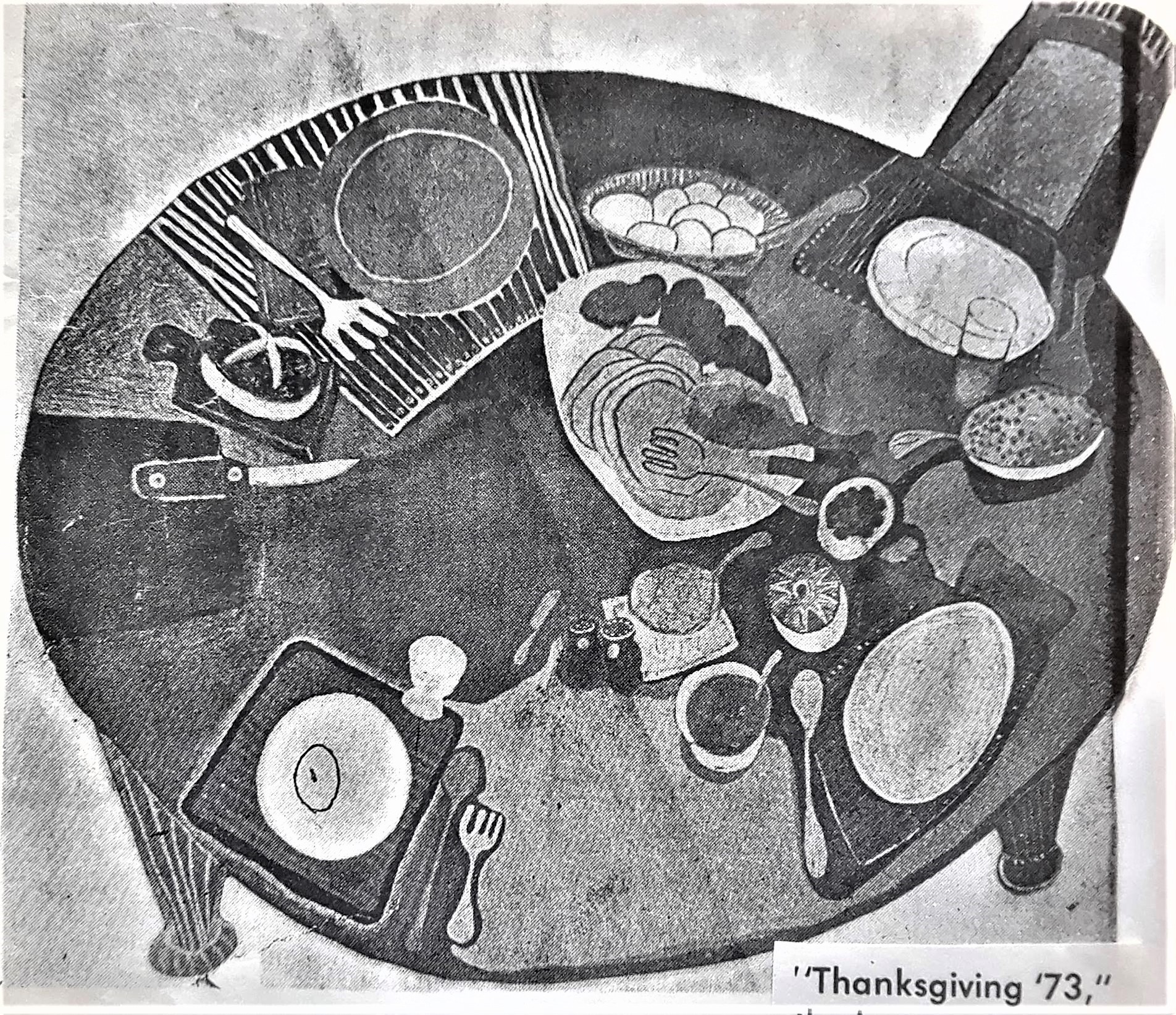

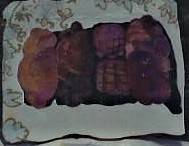
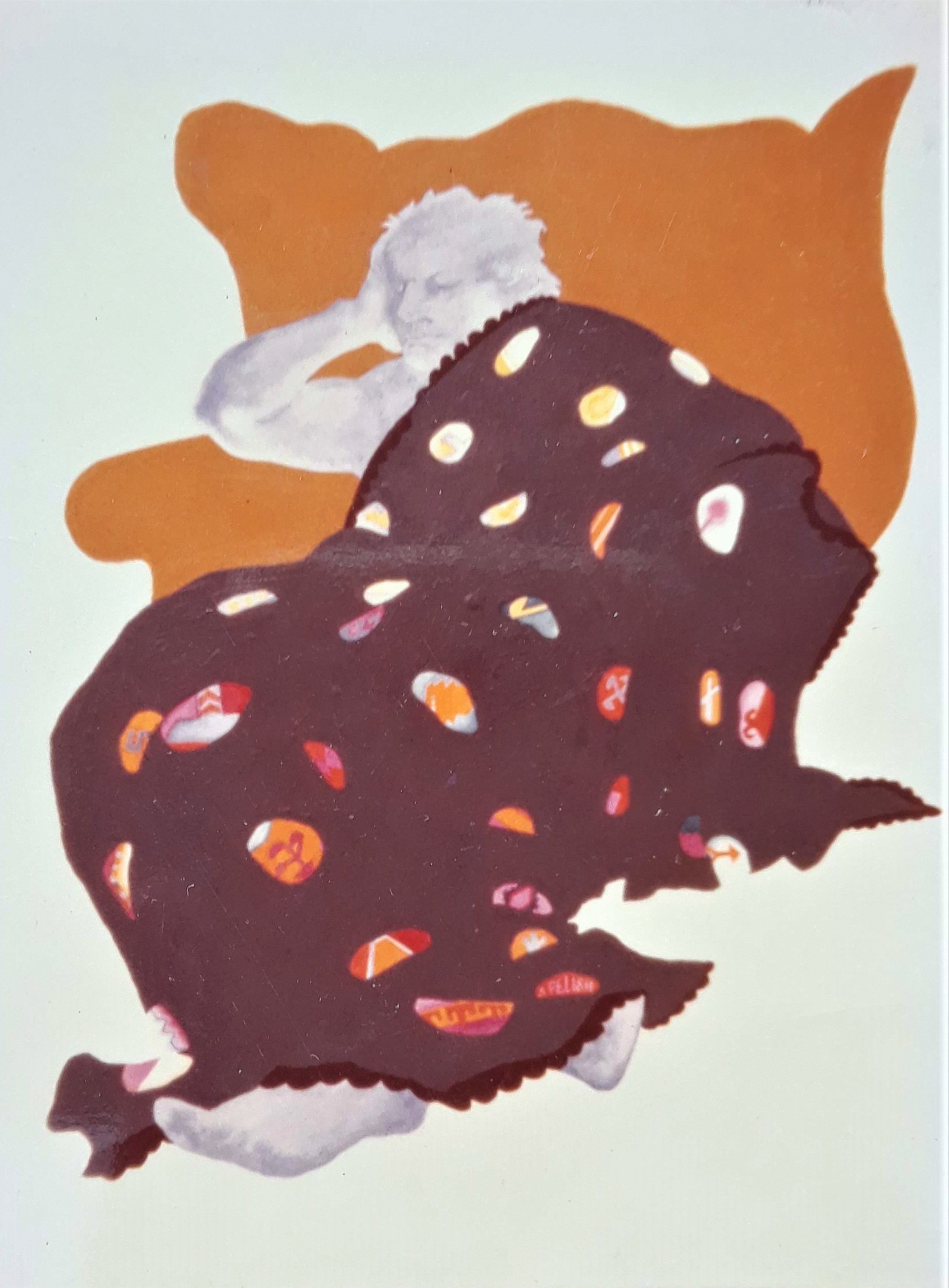
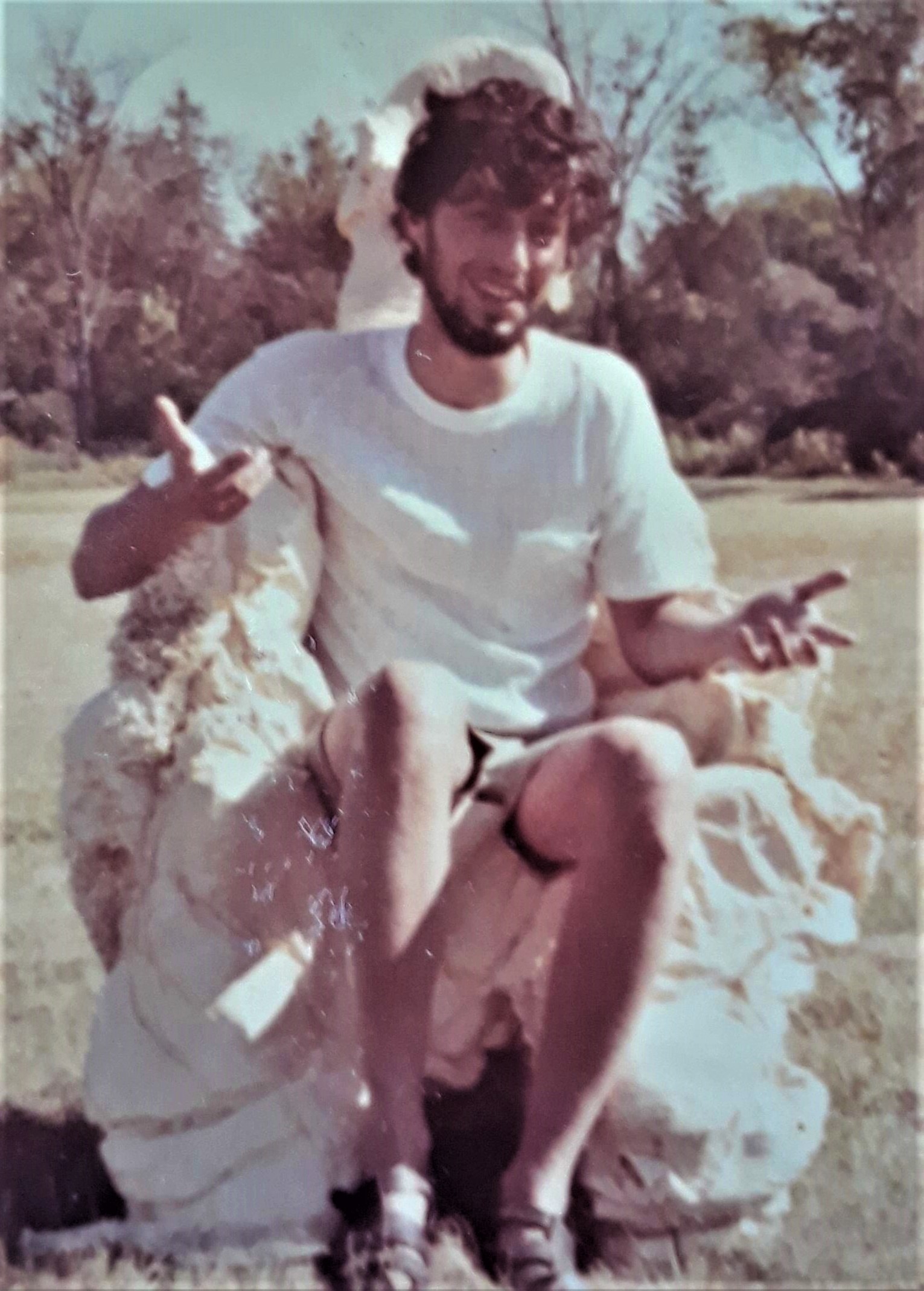
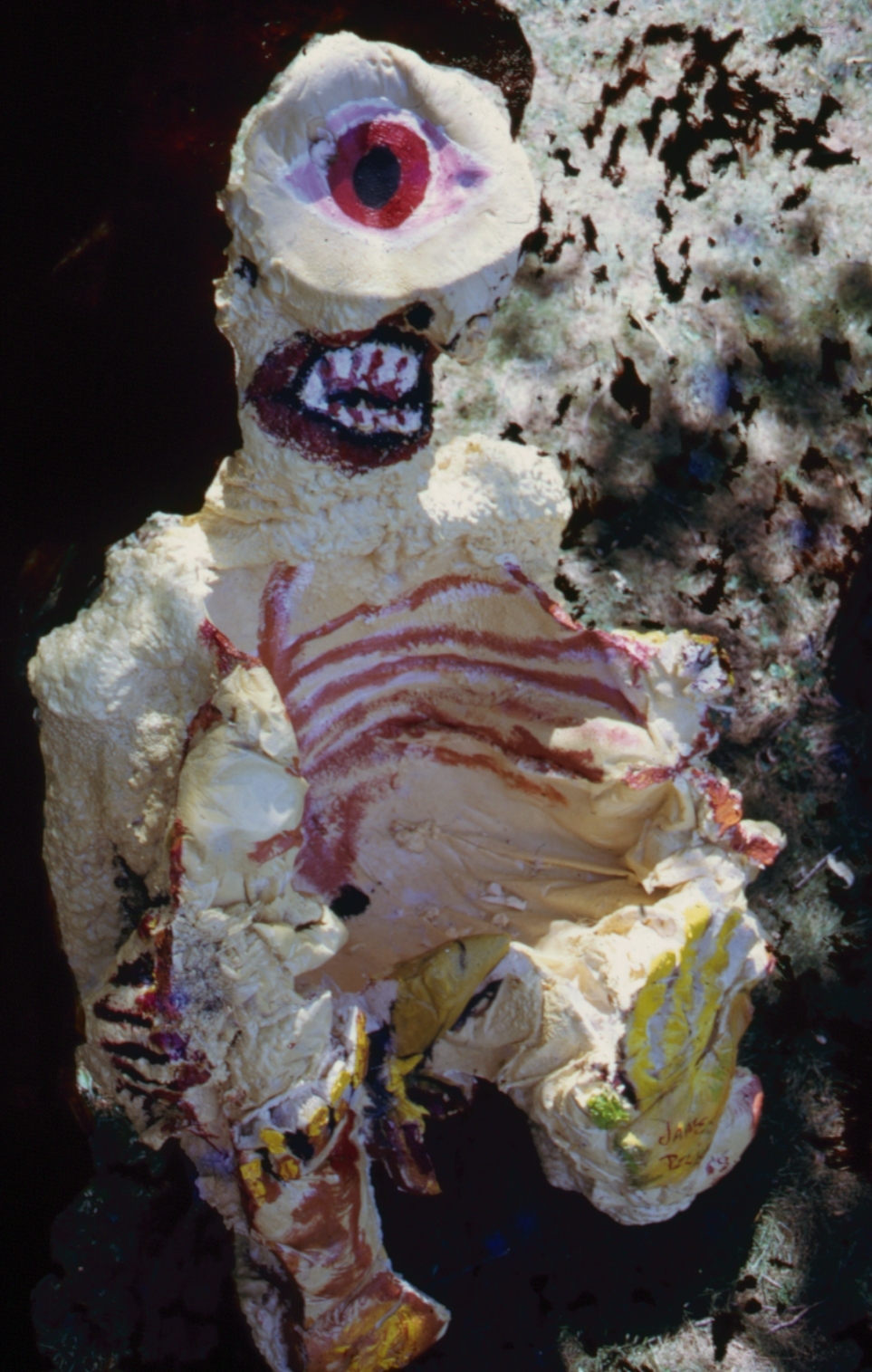
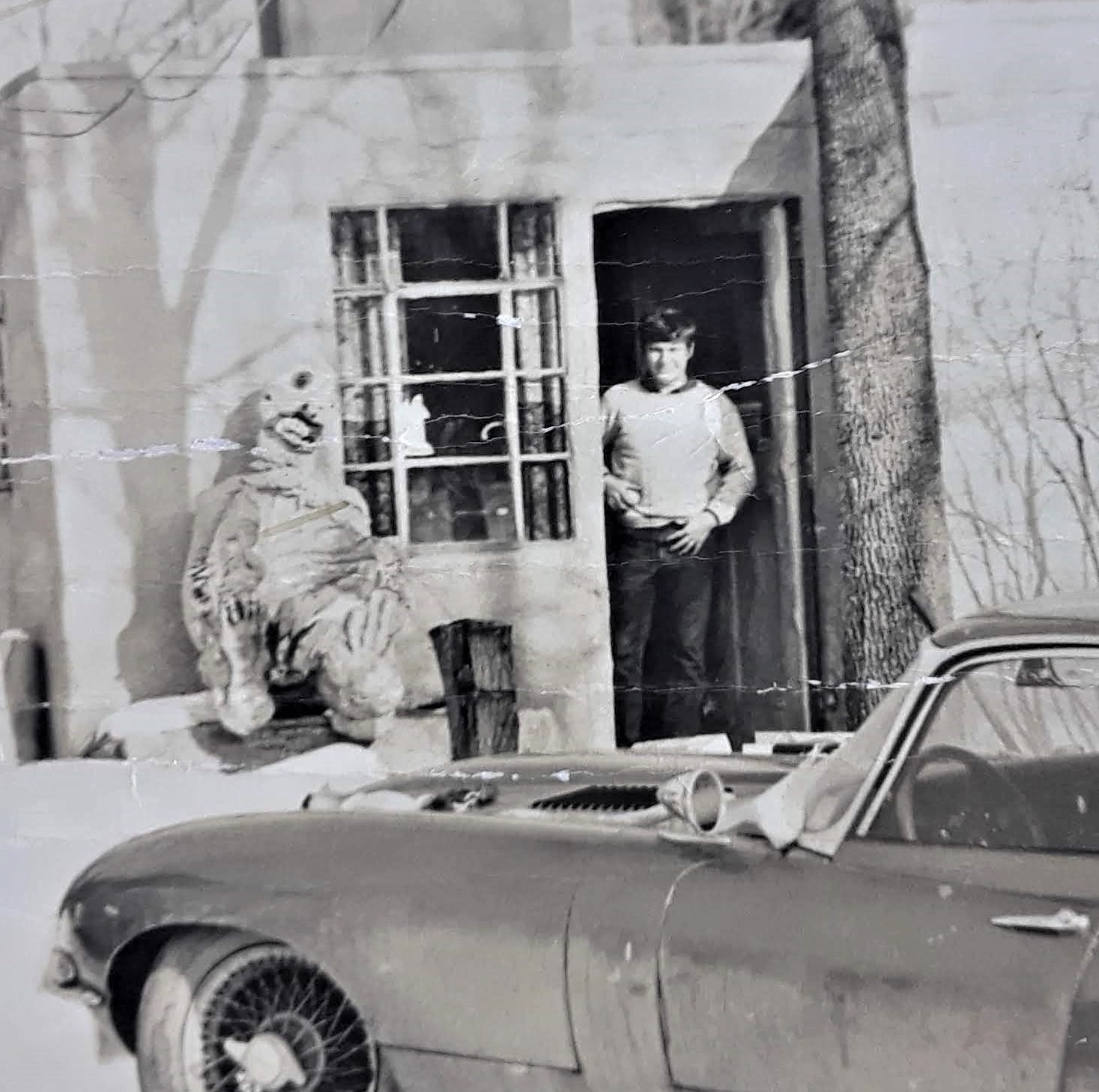
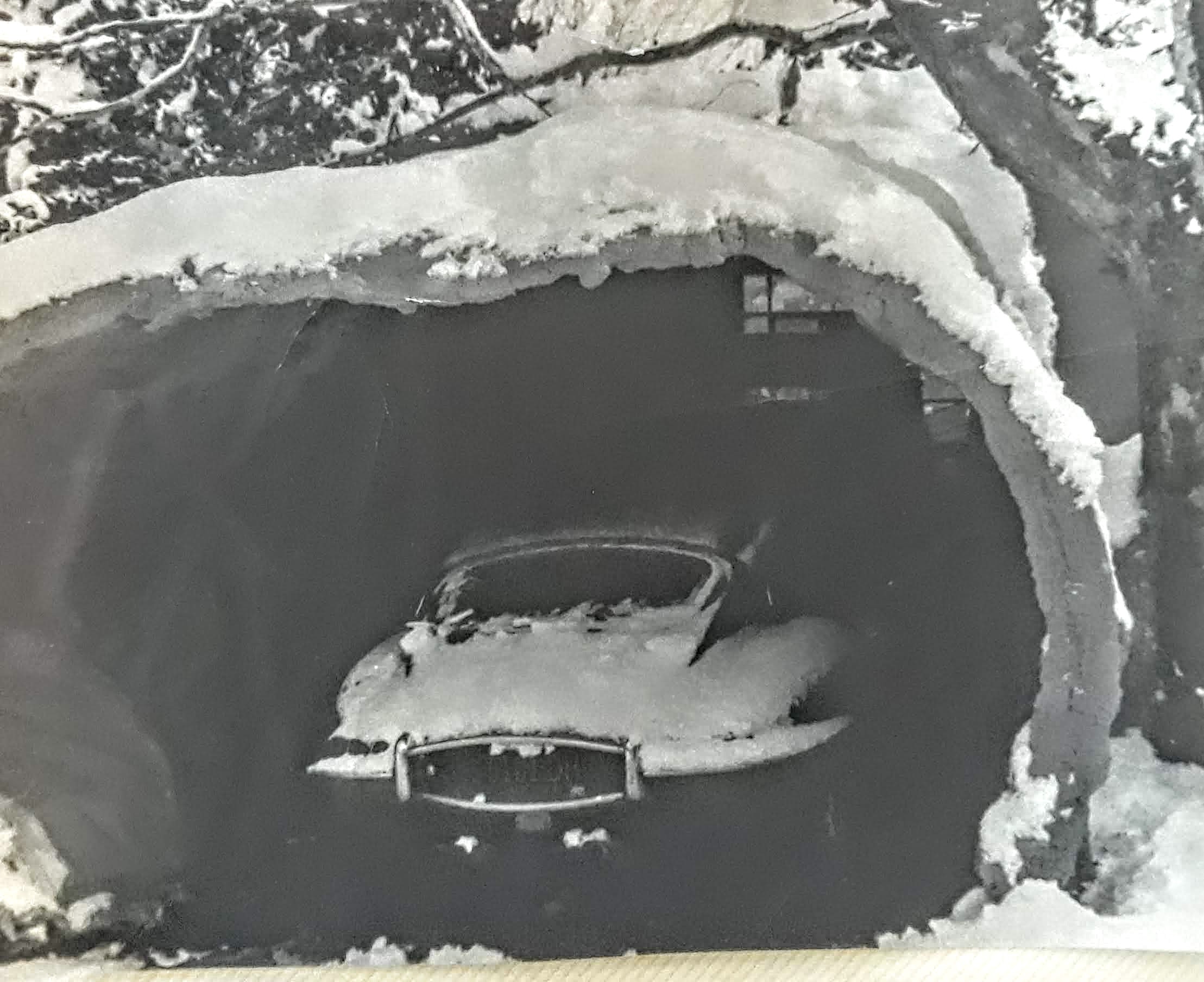
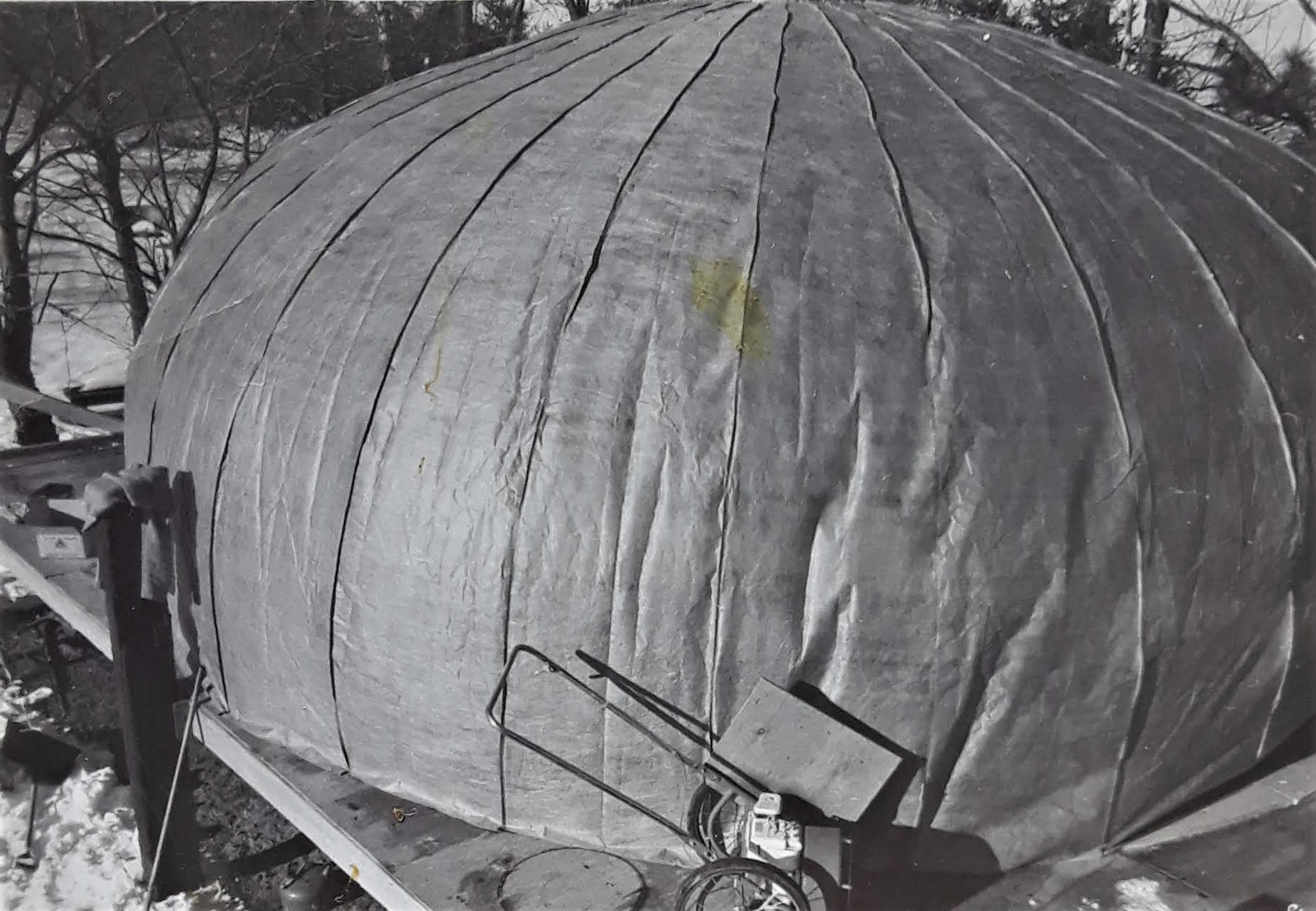
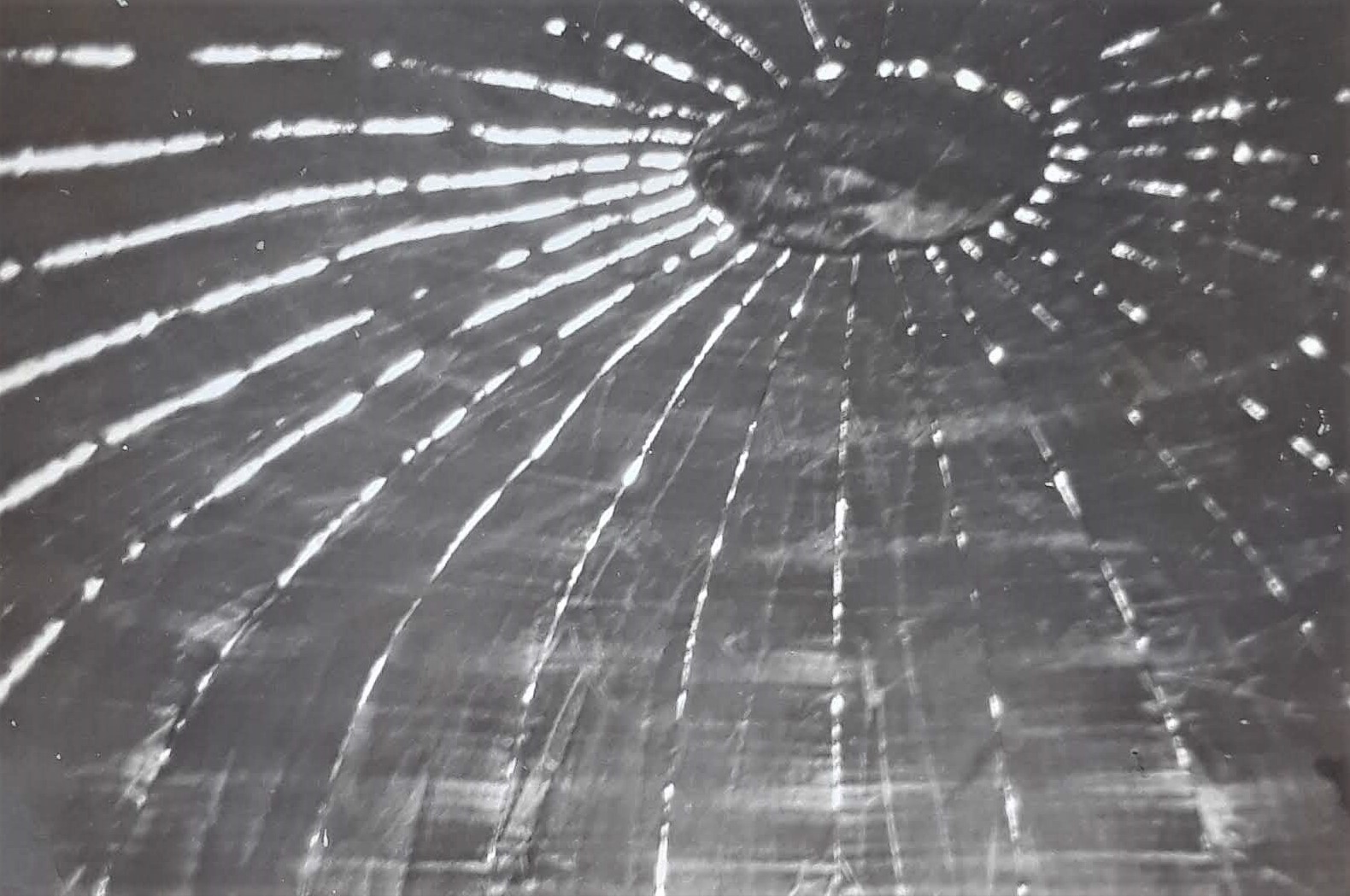
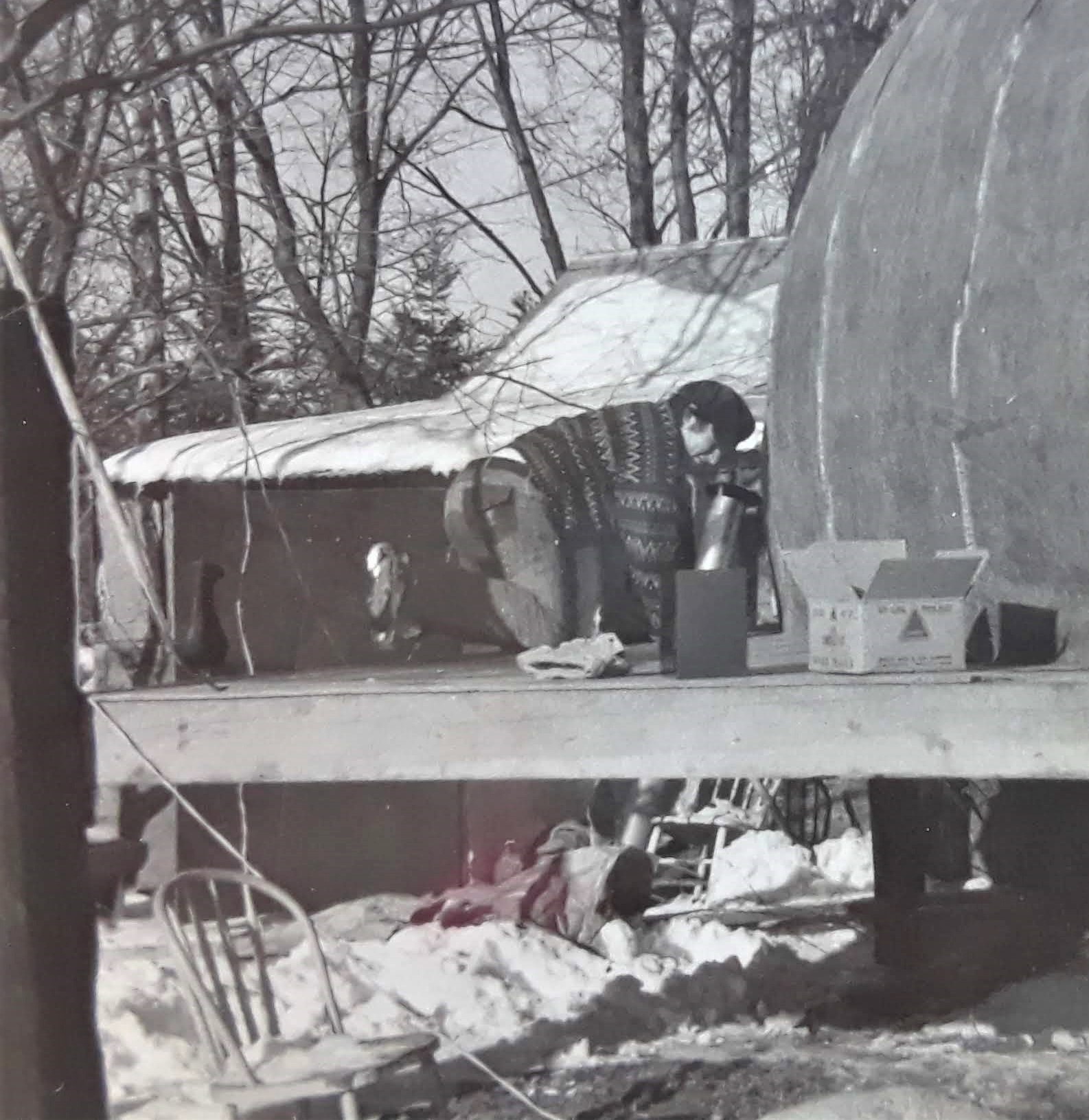

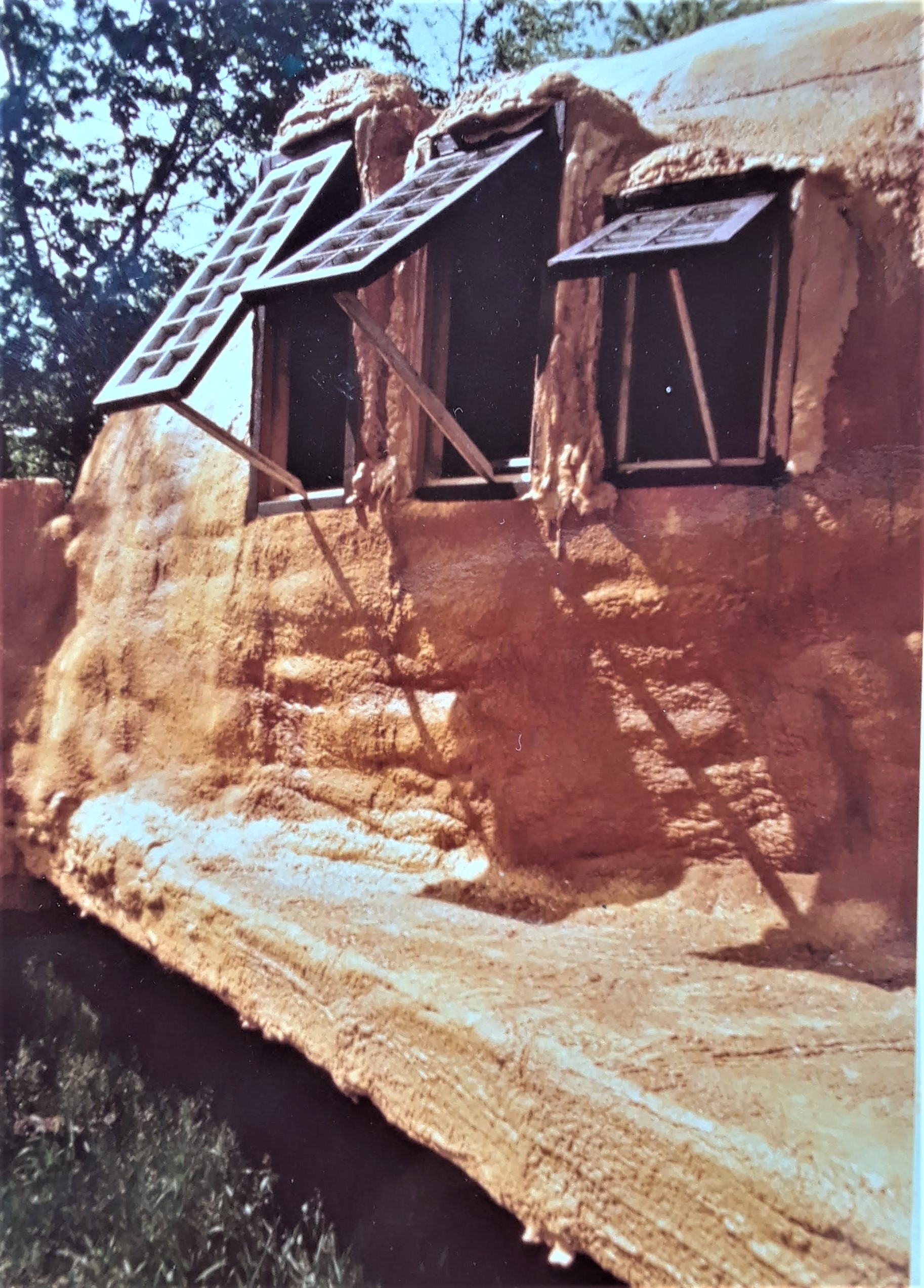
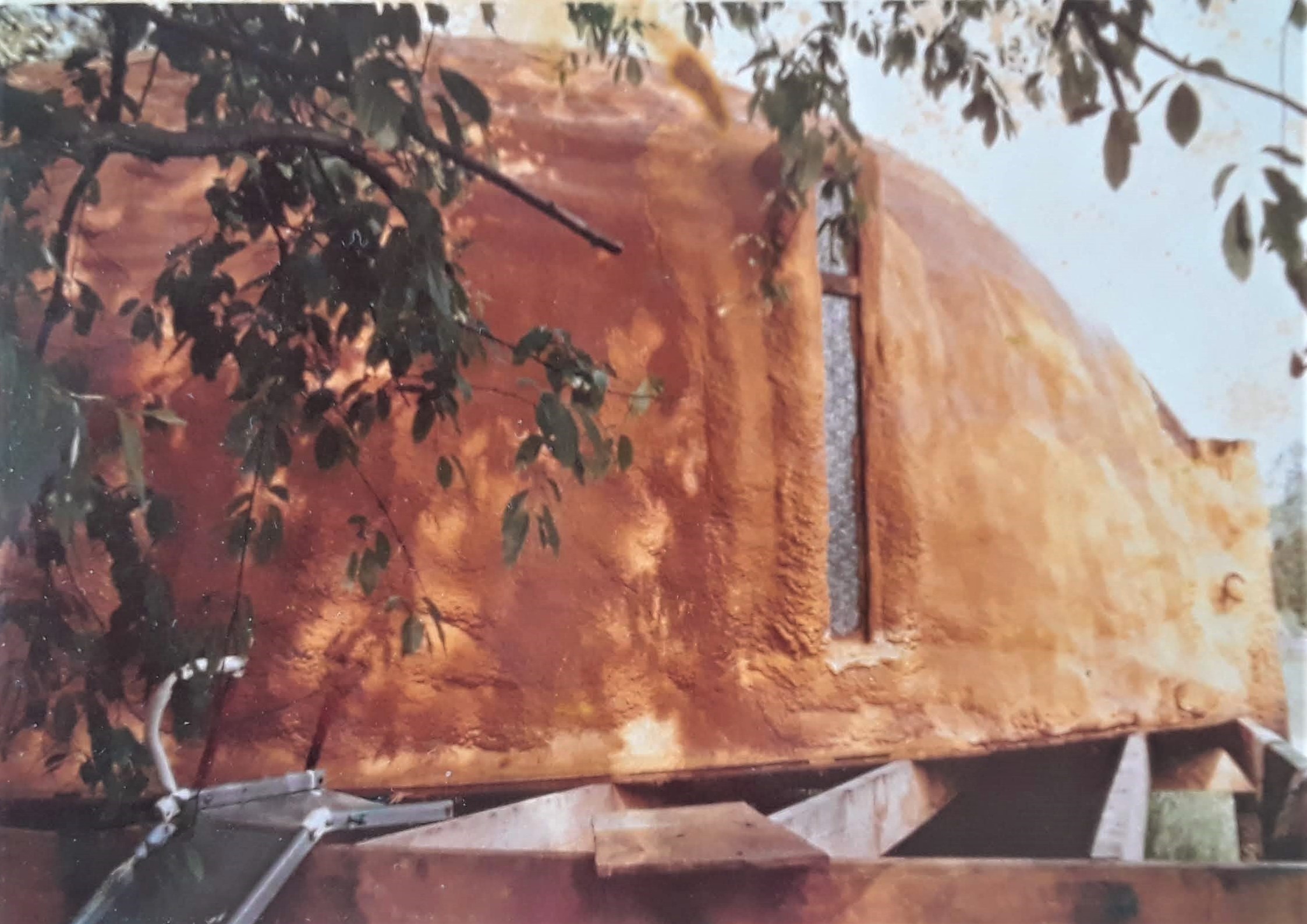
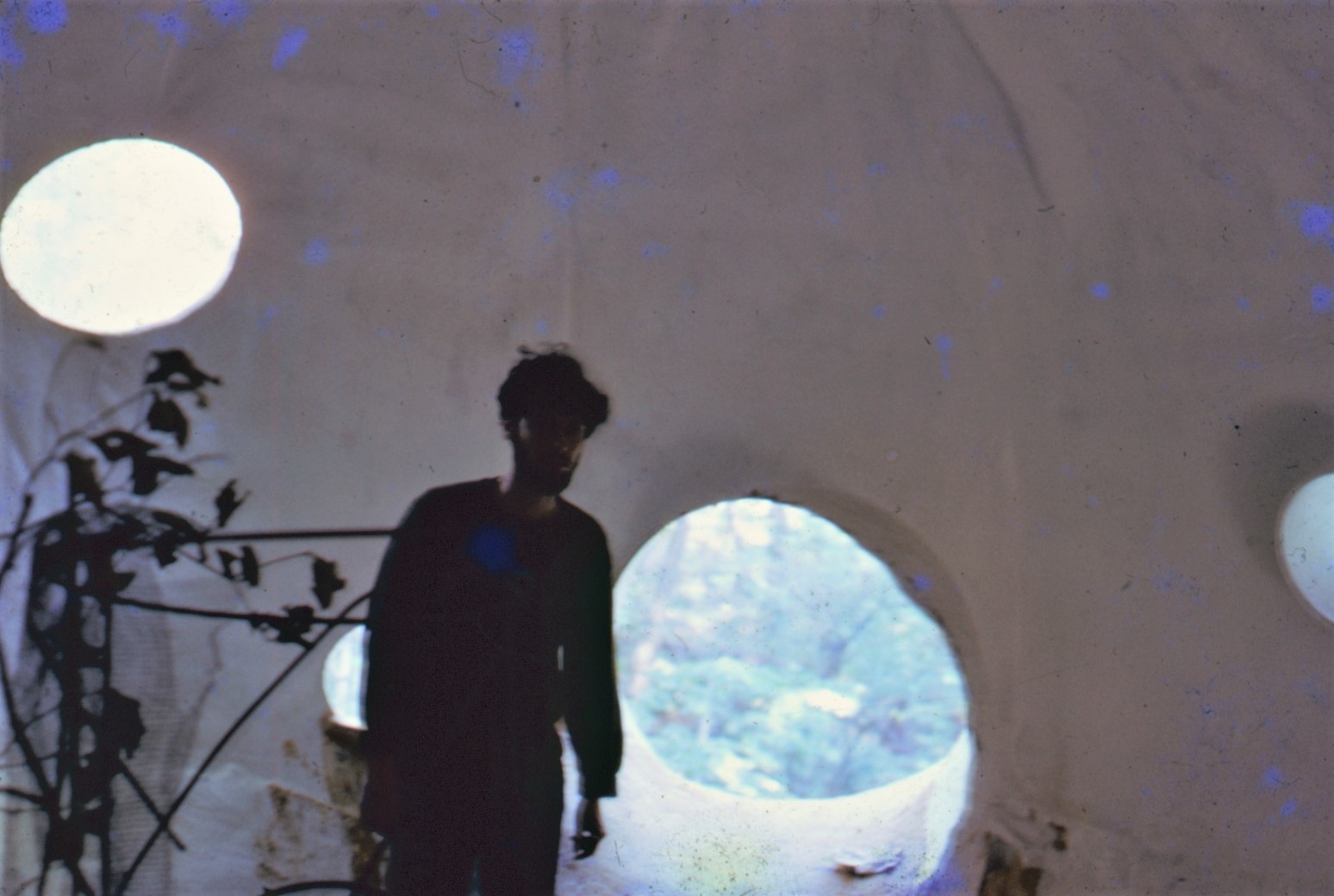
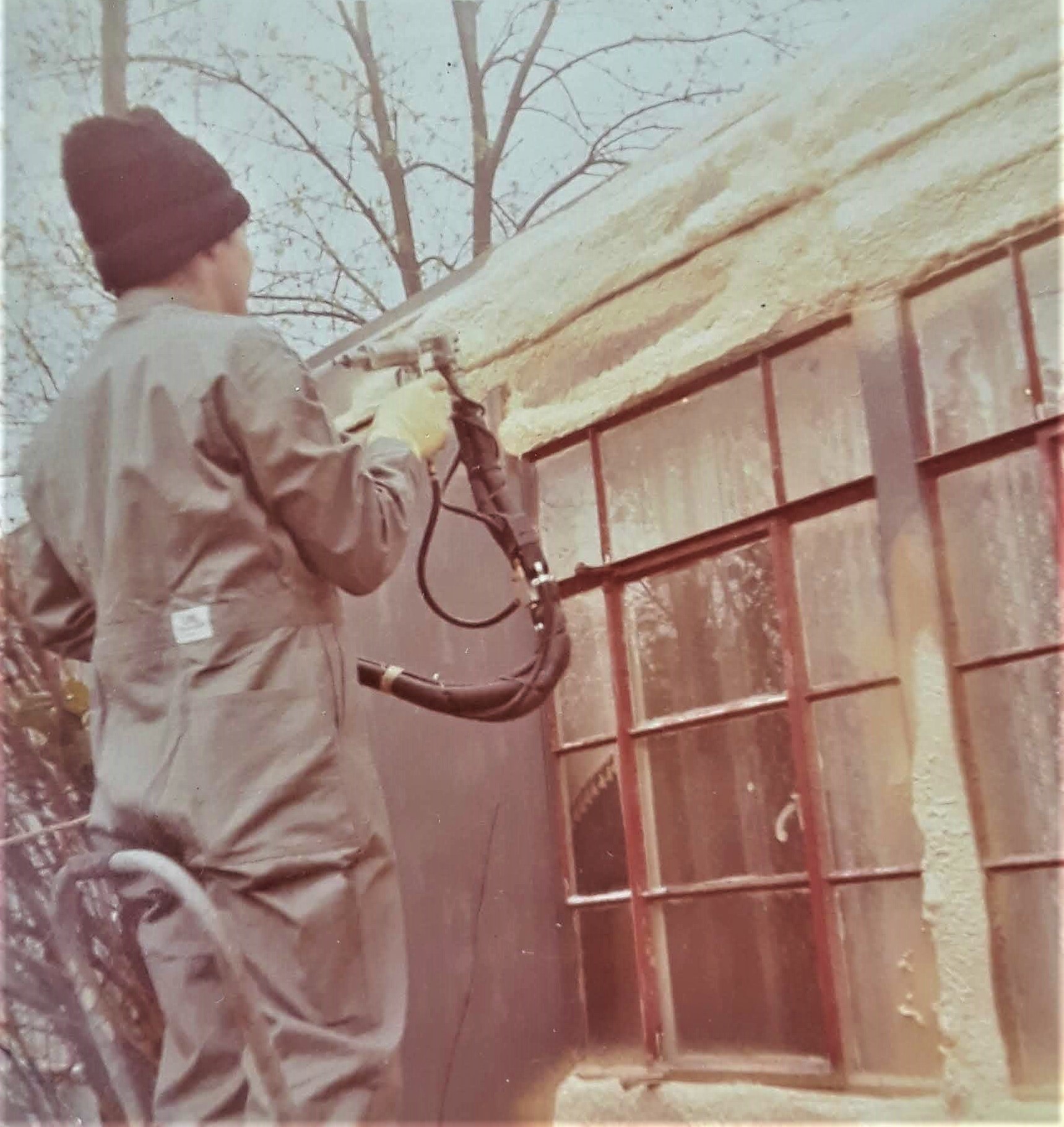
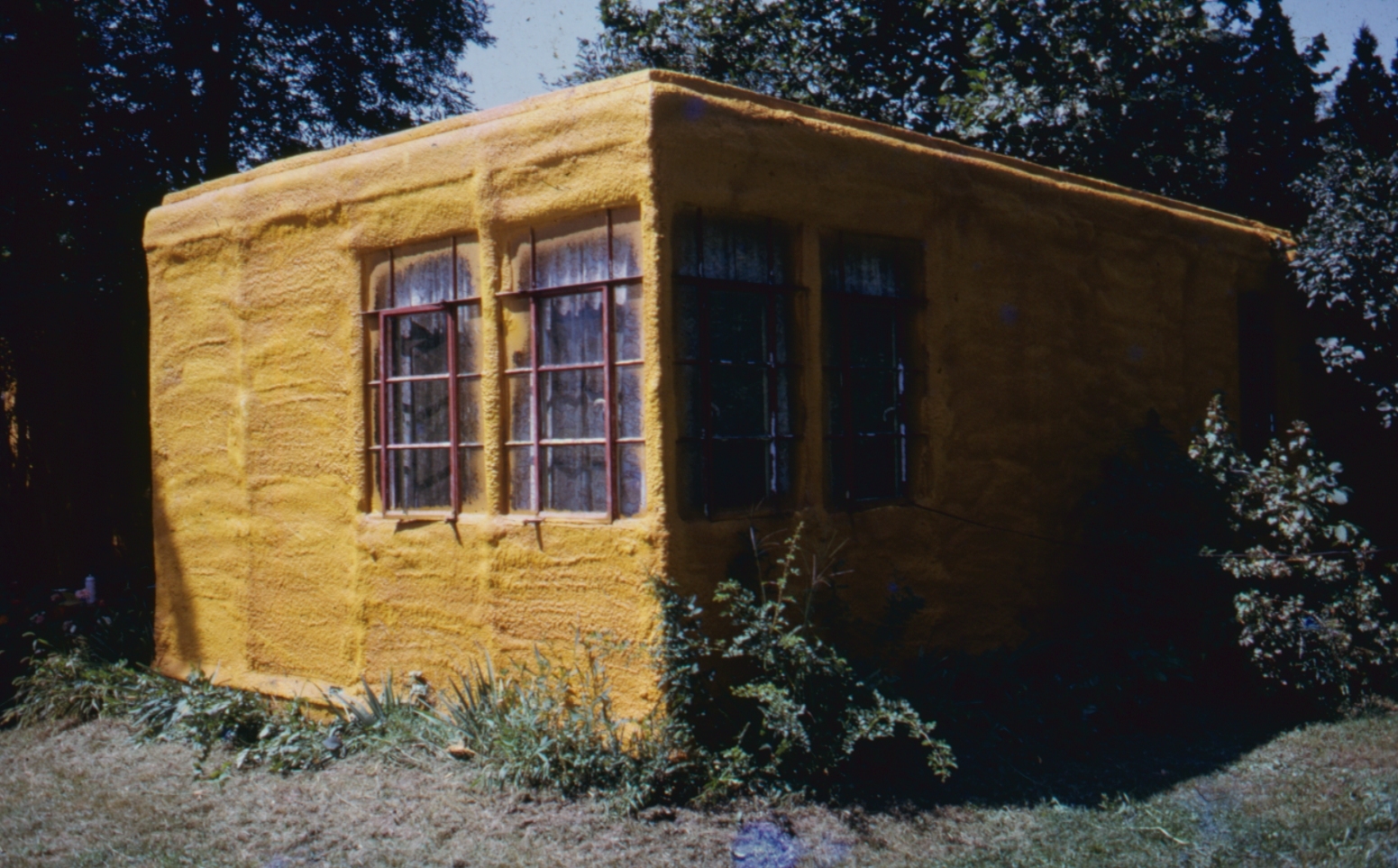
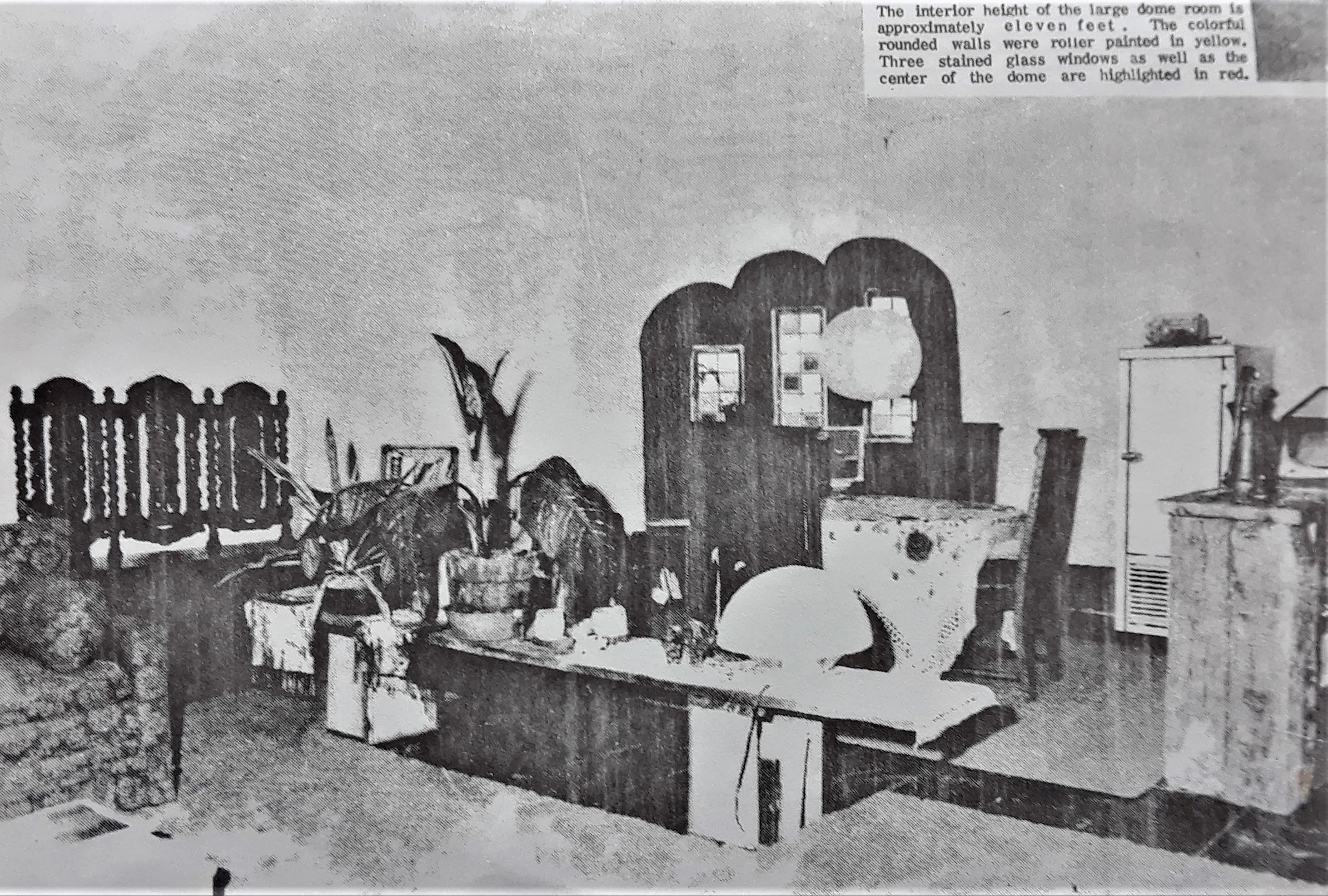
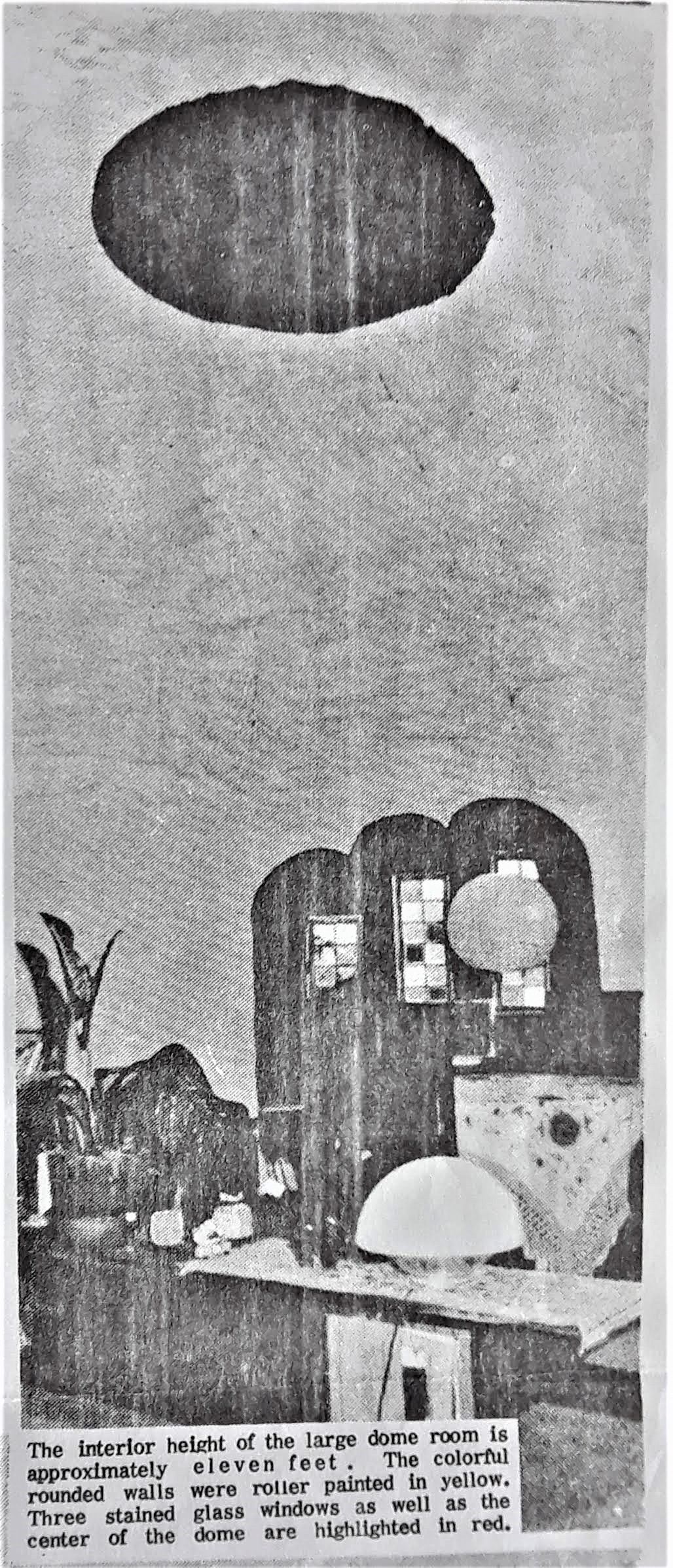
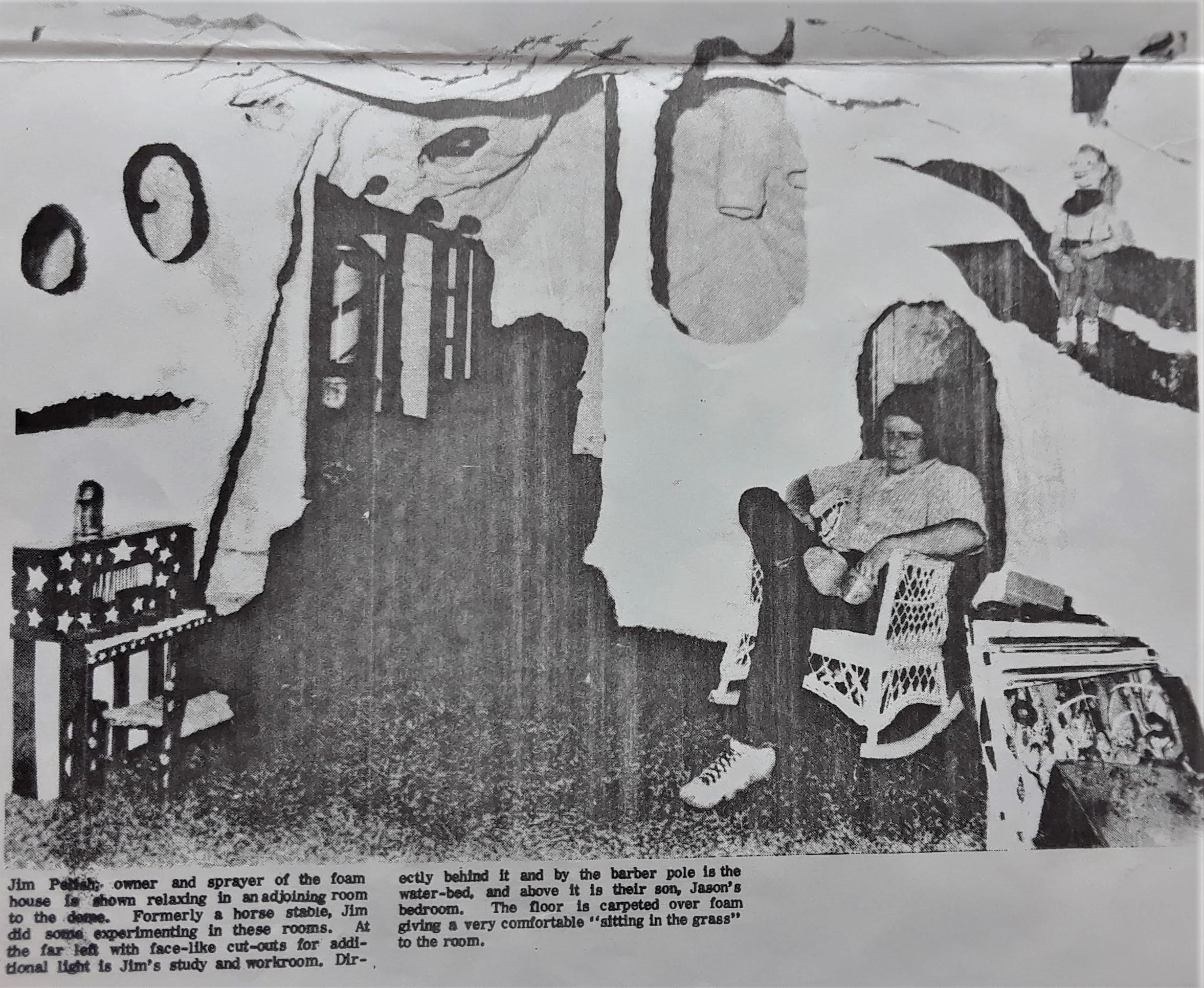
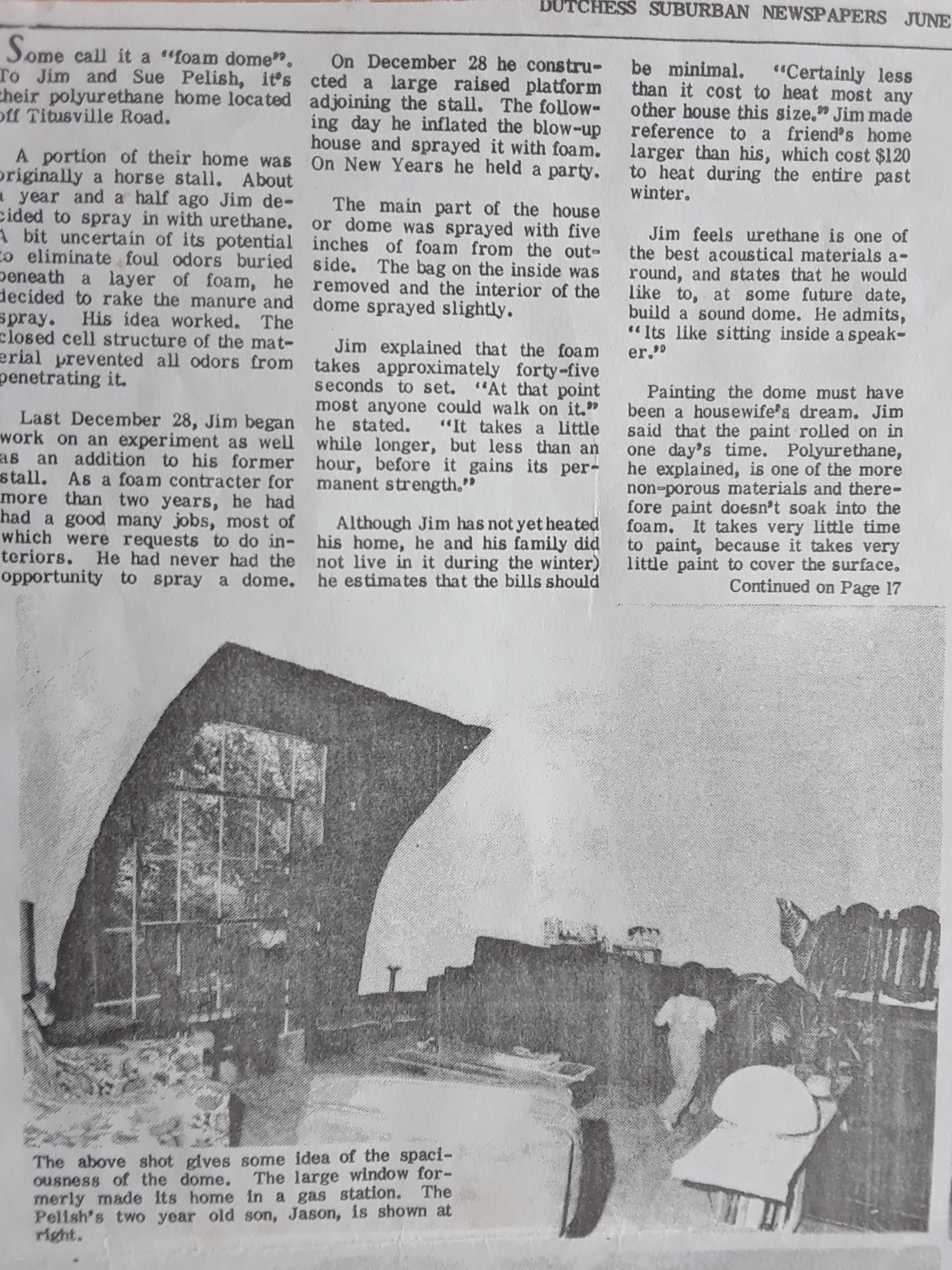
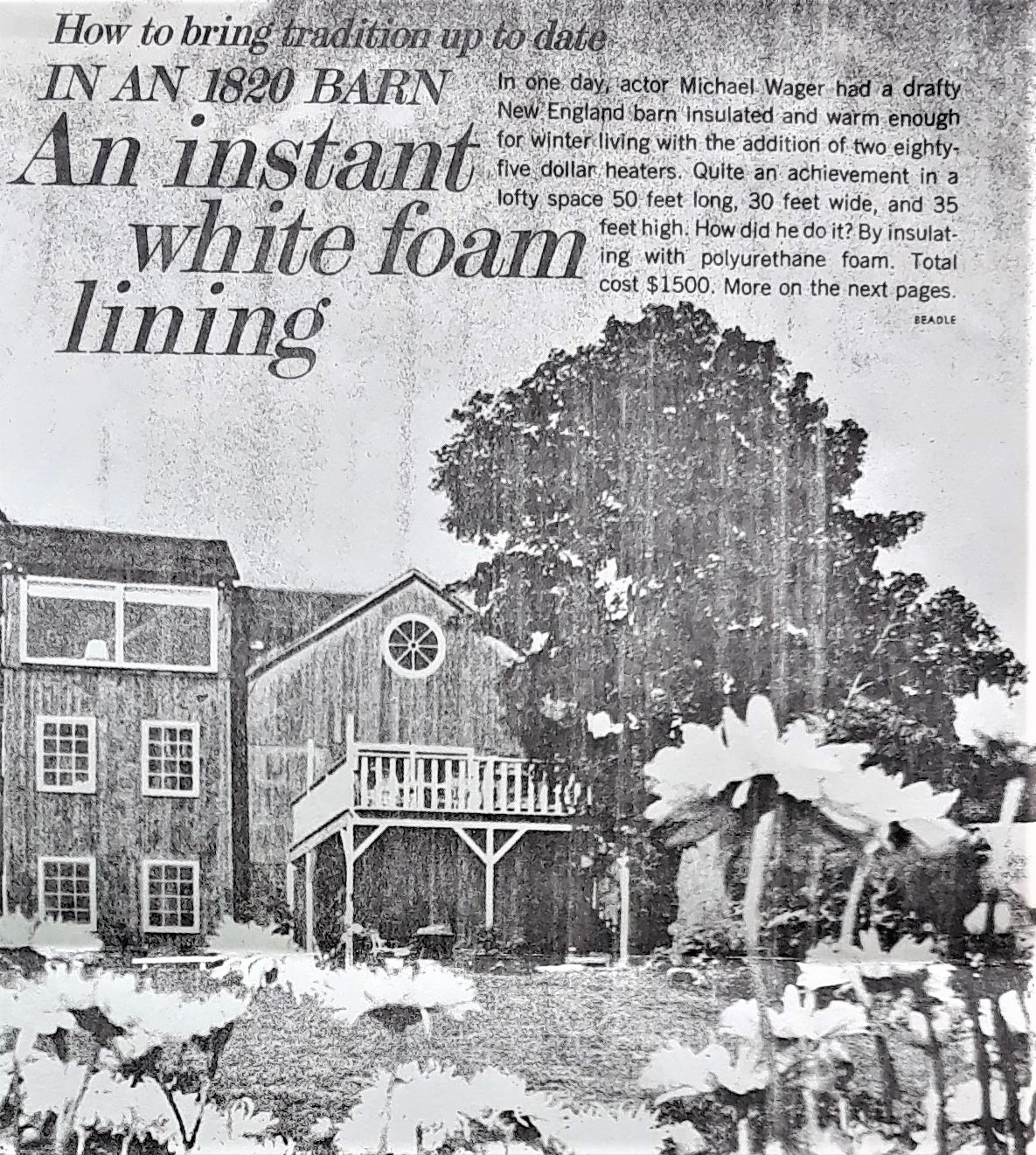
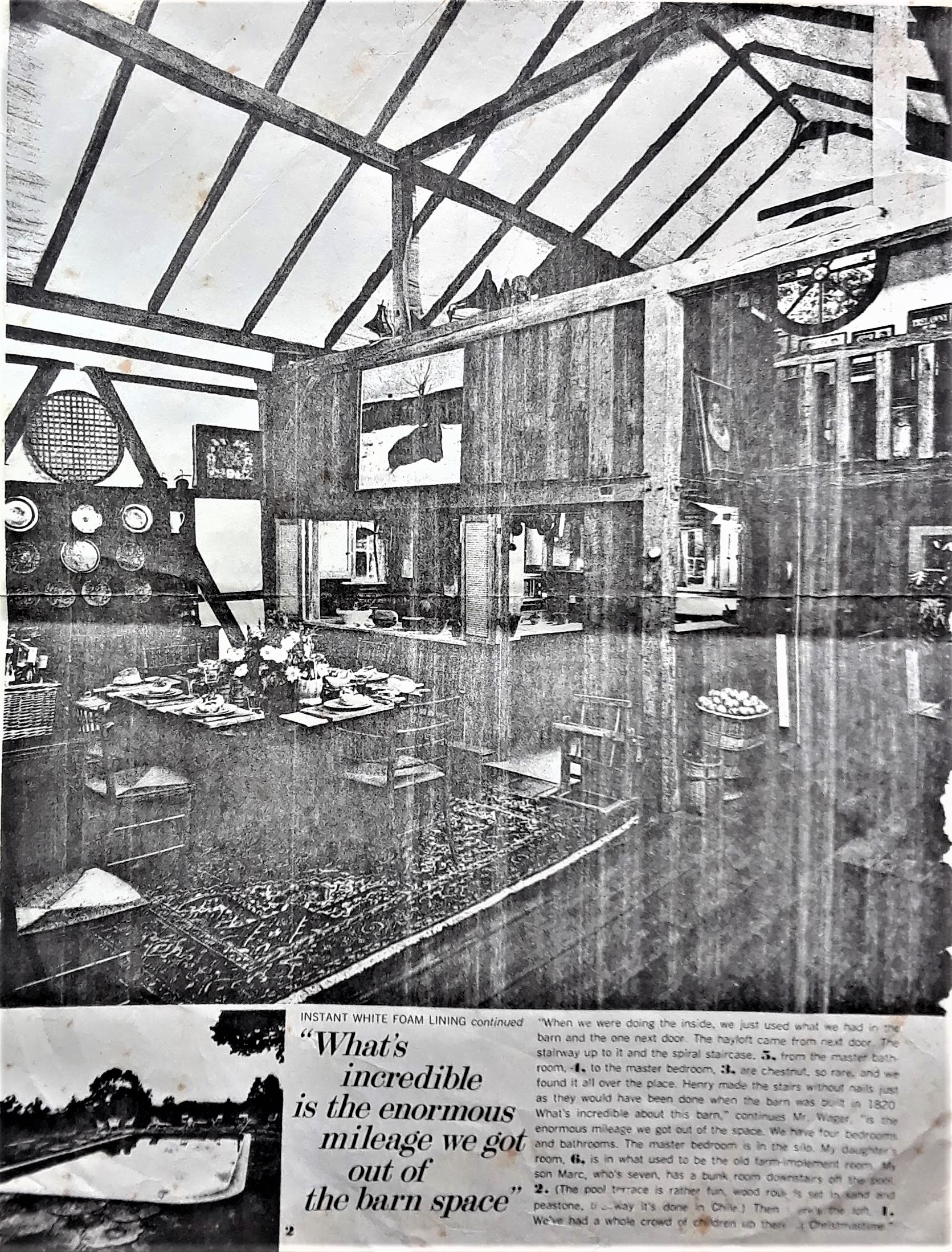
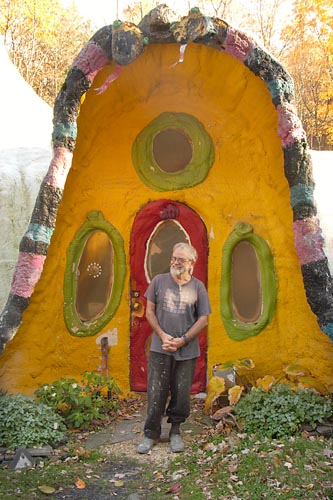
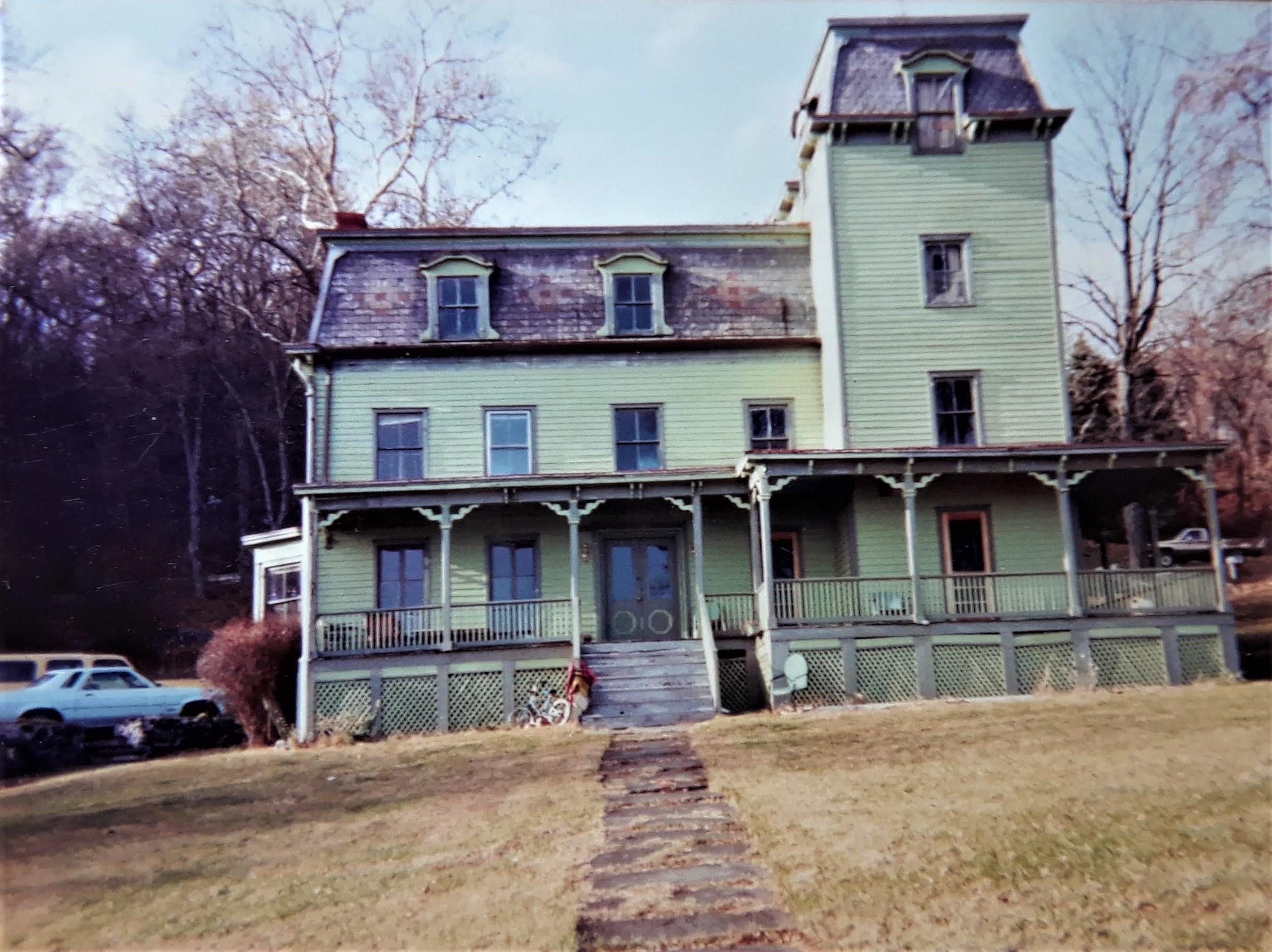
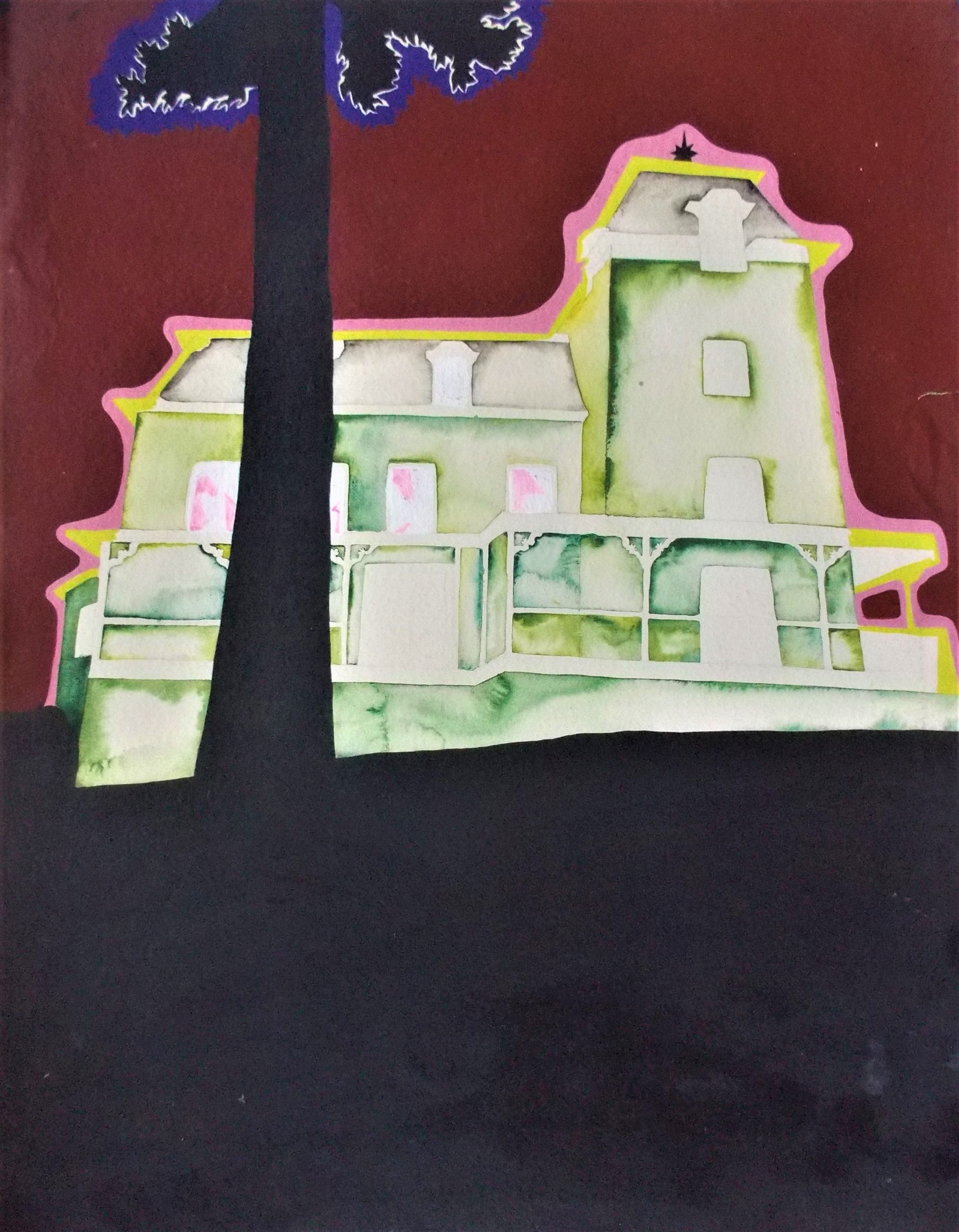
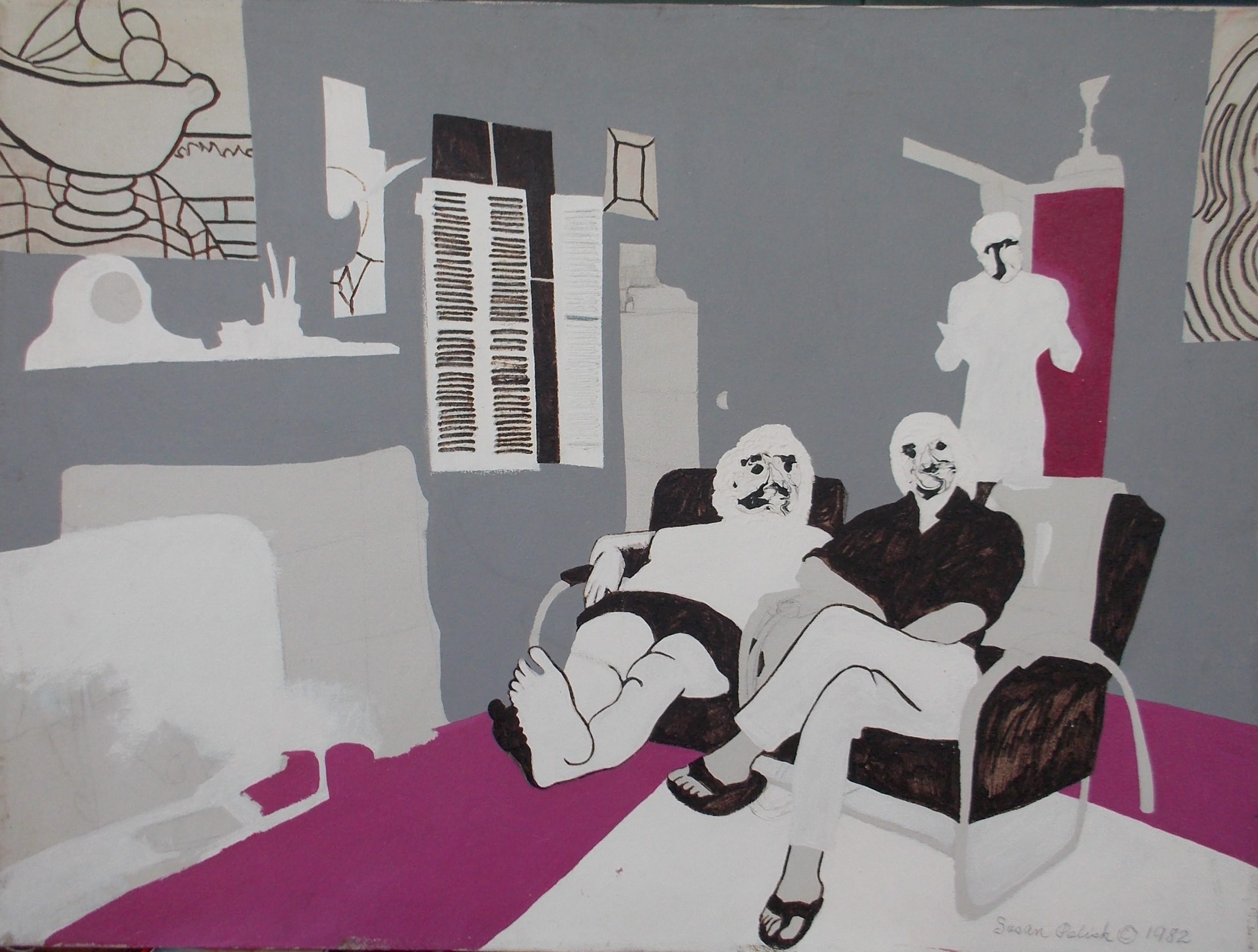

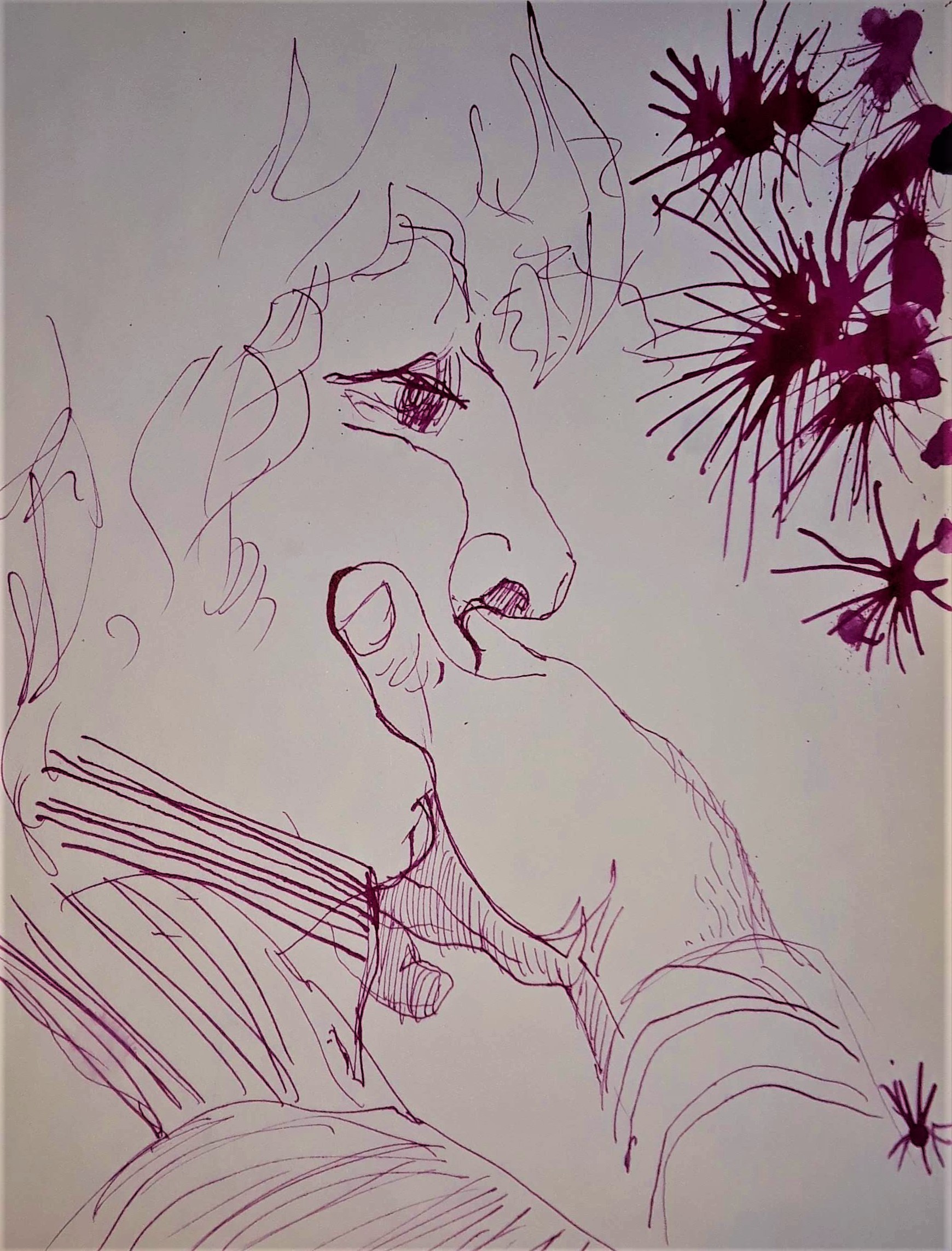
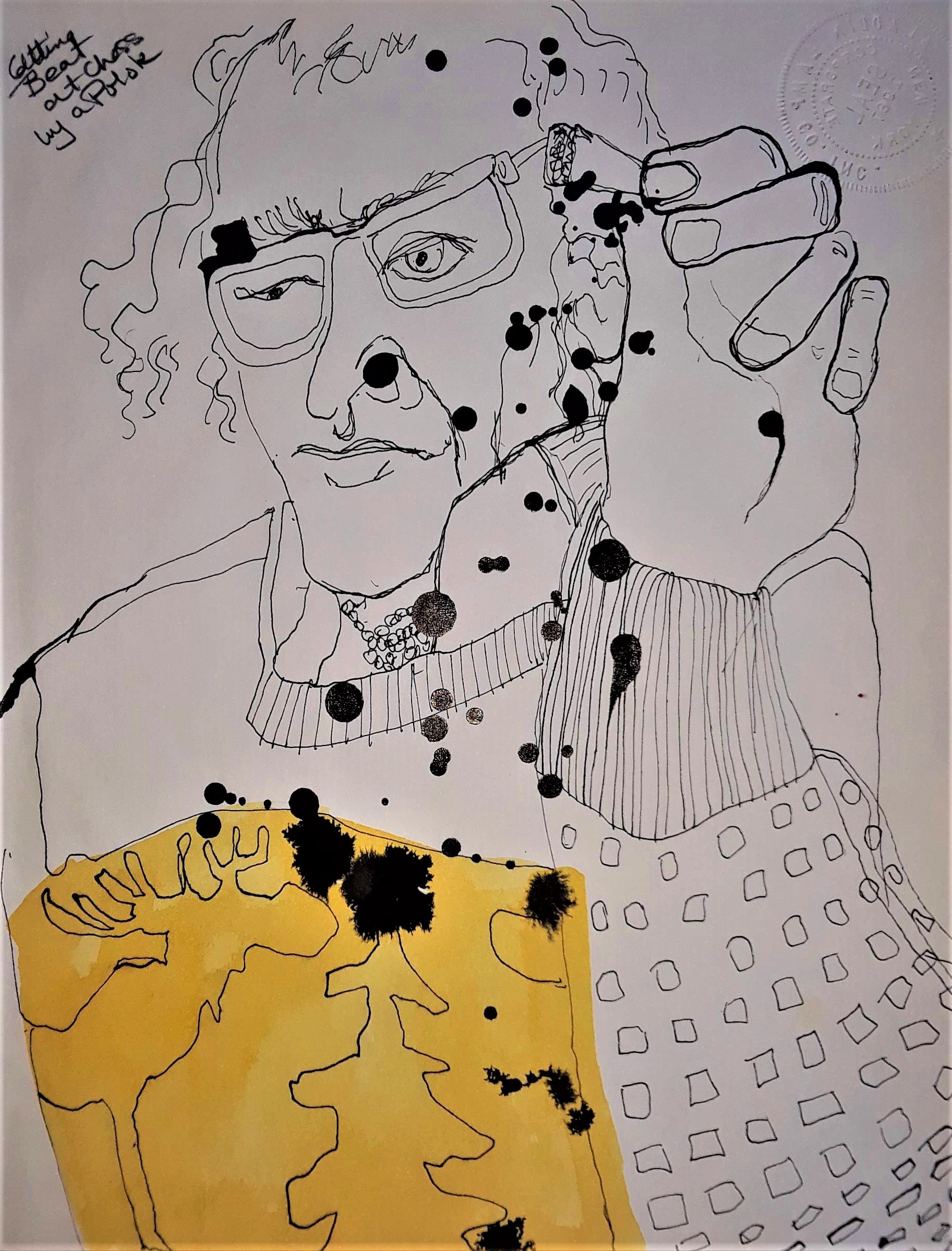
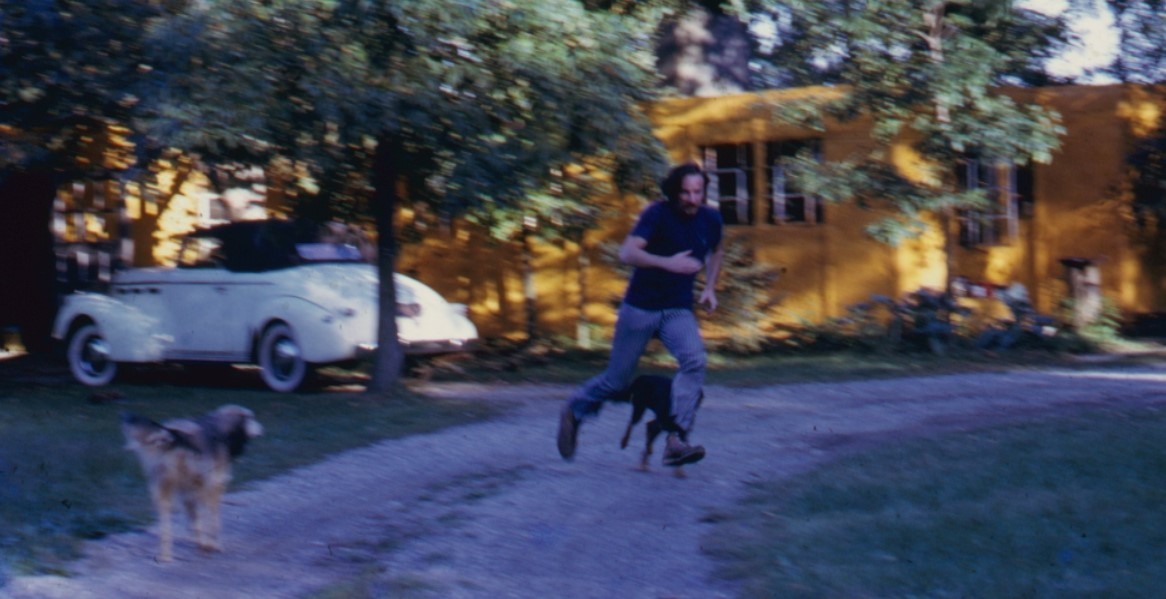
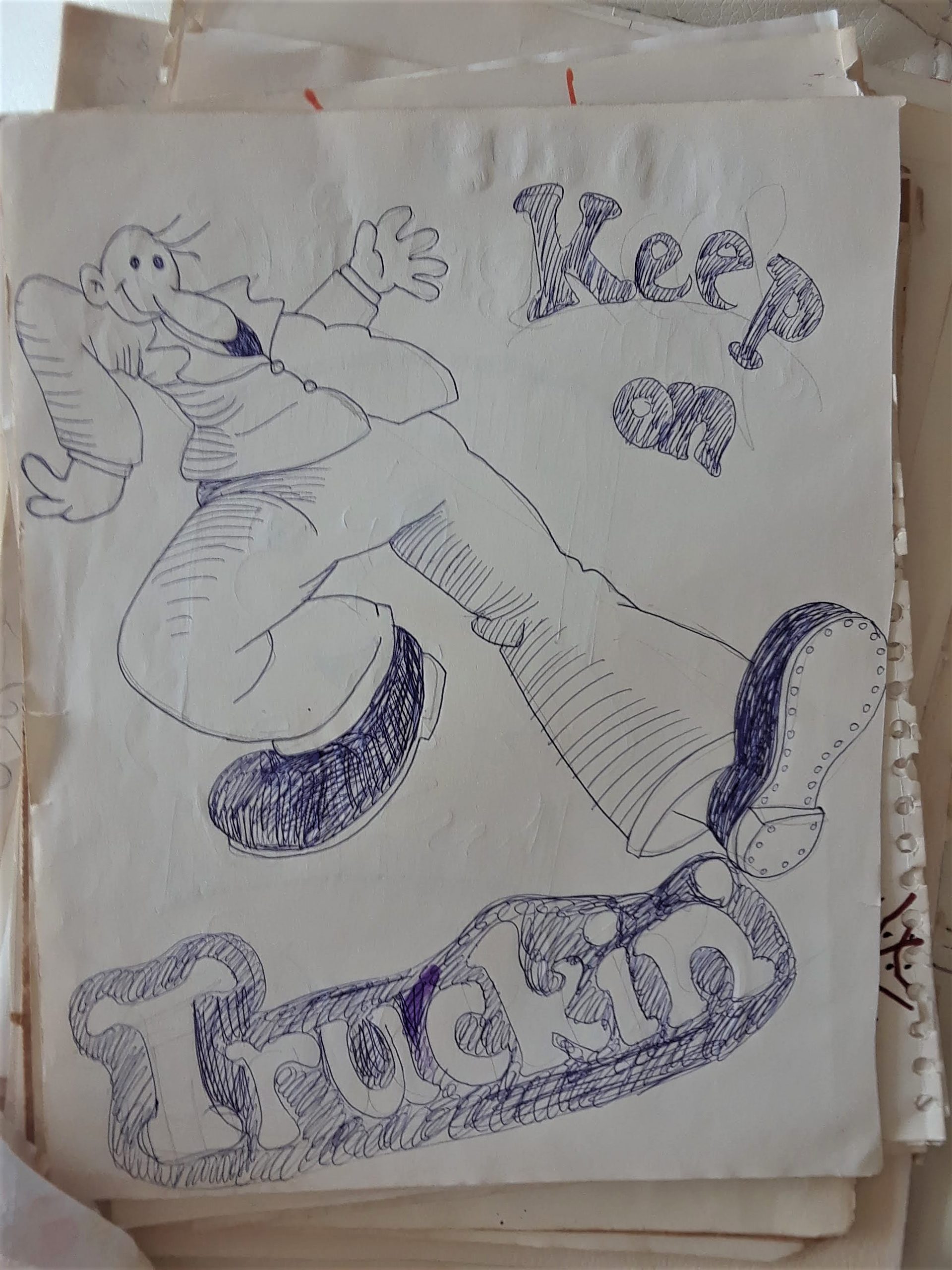
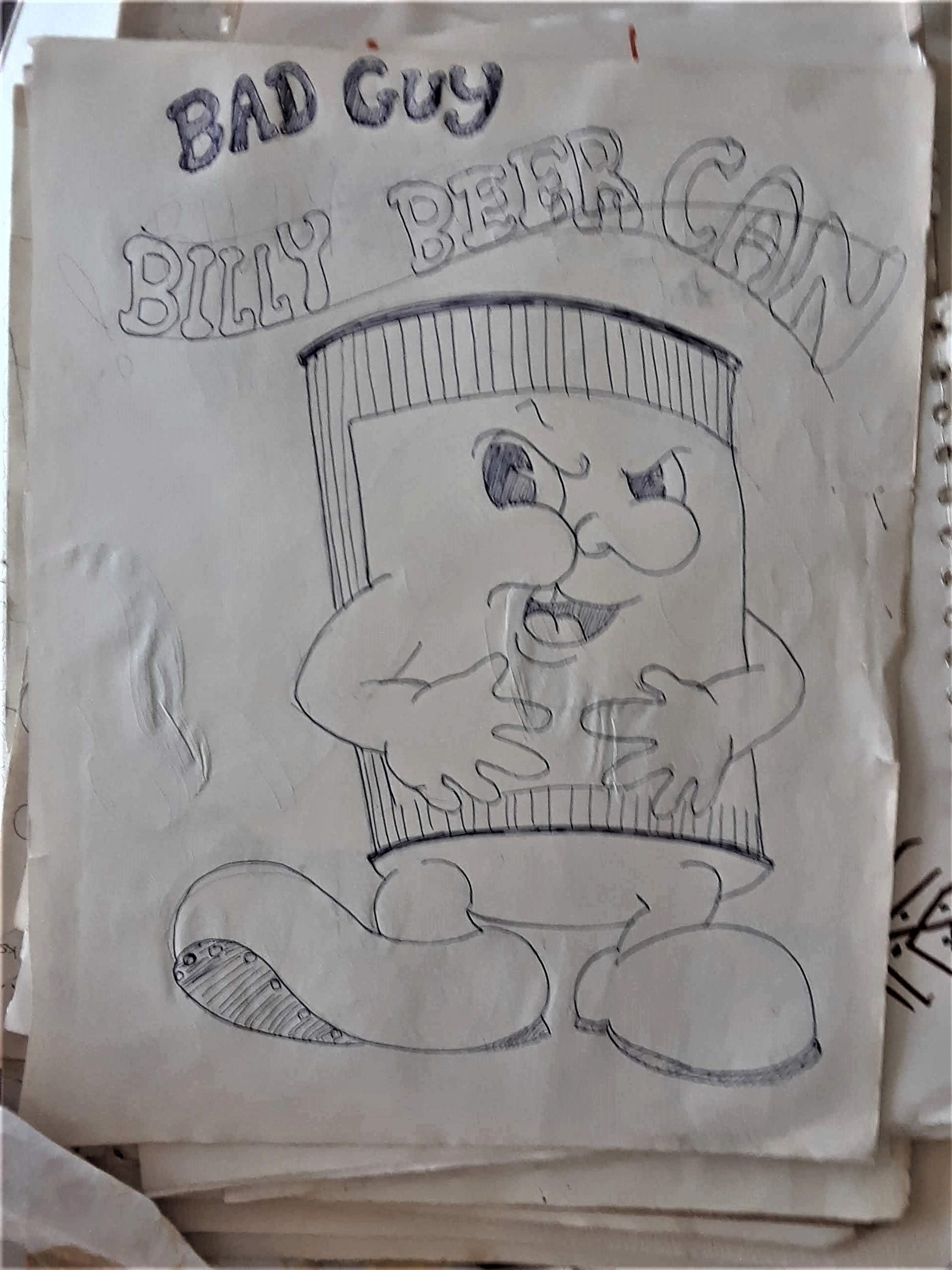
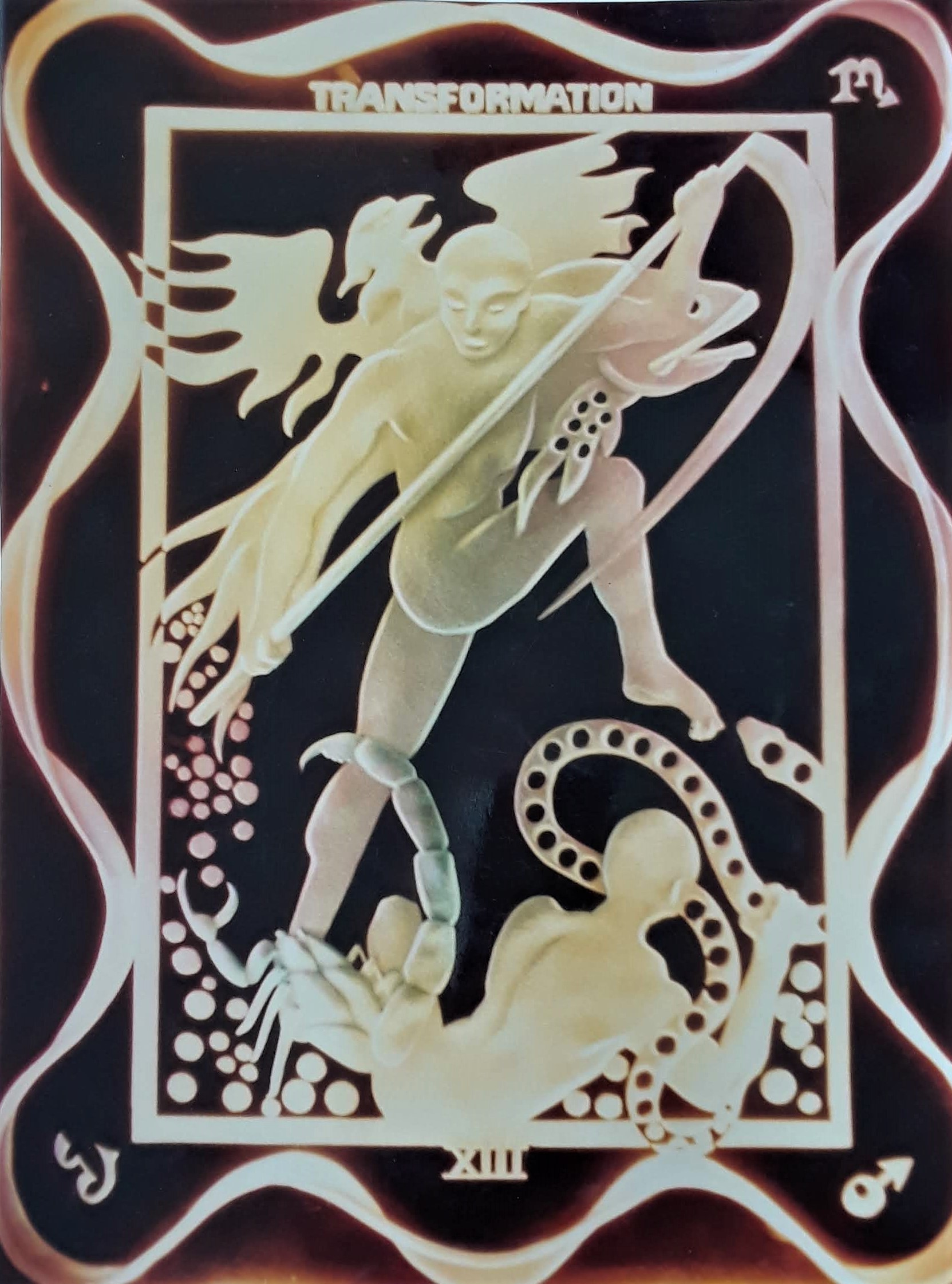
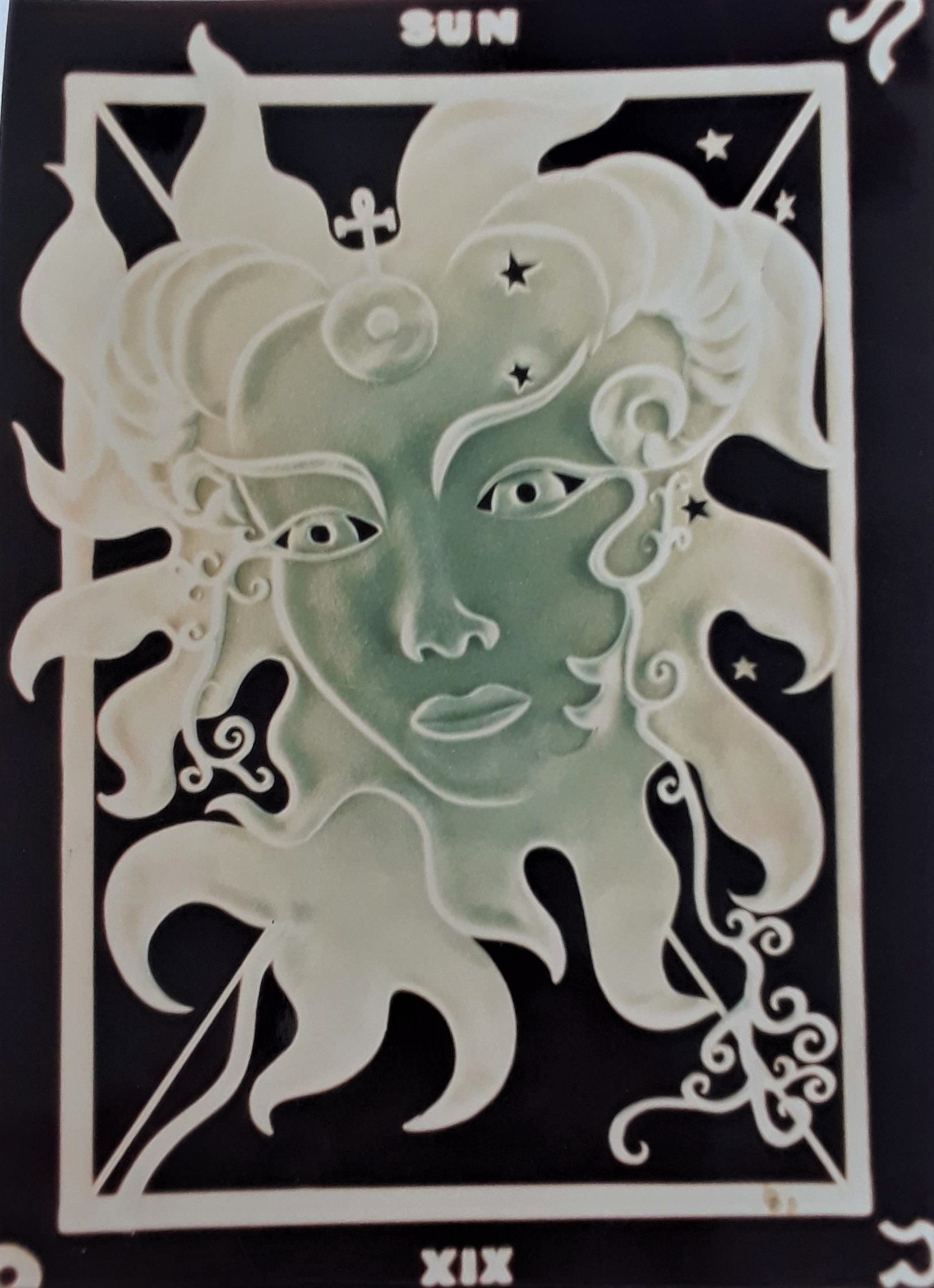
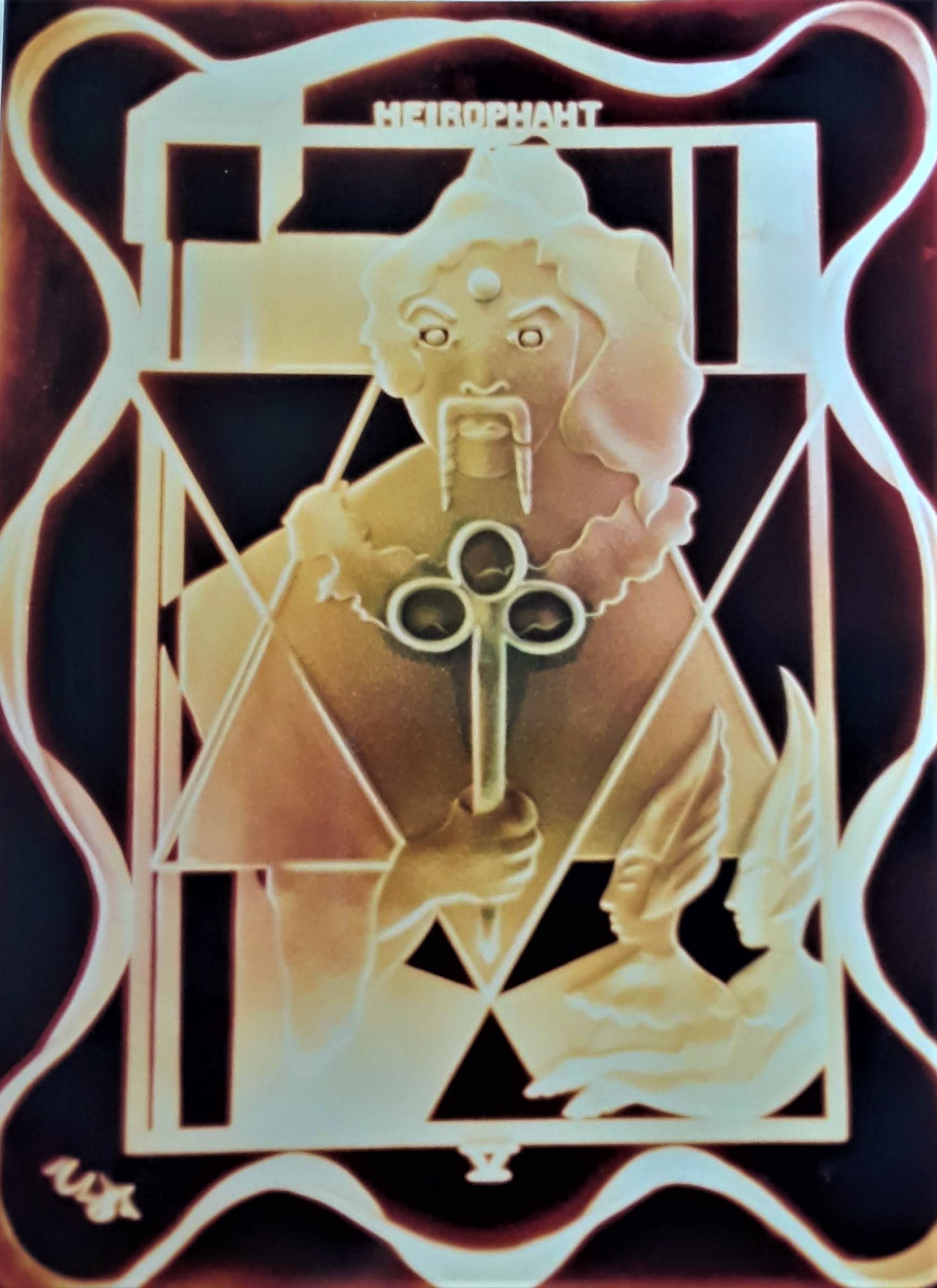
Do you have funky glass lamps for sell? Marguerite
Yes, thank you for your inquiry. Do you have any pictures of what you want?